Matador Network's Blog, page 476
May 17, 2022
Watch: Here’s Why Campfire Smoke Always Blows in Your Face

Whether you’re an experienced camper or you’re looking to go on a trip this summer, campfires can keep you warm, cook your food, be something to bond over with friends, and, of course, smores. But even though campfires are a beloved tradition, there are some slight nuisances — one of which is dealing with excess smoke. Hank Green, a producer of SciShow on Youtube, explains the physics of why it can be so hard to escape being surrounded by campfire smoke.
It turns out the smoky problem is airflow. As the campfire releases its energy as heat, that heat is absorbed by some air molecules, making them move faster. The slower air molecules collide with the speedy ones causing them to move in the opposite direction, and the air near the fire becomes less dense than the air around it, causing it to rise. The denser air pushes that air until it runs into an object. That object is you.
This explains why smoke ends up in your eyes. But why can’t you escape it? The wall your body creates starts a vacuum. So the air behind you can’t get toward the fire, and the air coming from the fire can’t escape you. This will continue to happen regardless of where you move to, and the more friends you have with you, the bigger the wall is.
There are a few options to avoid this smoky nonsense. The first is to create a smokeless fire pit with additional paths for incoming air. The other is to equidistantly separate you and your friends around the fire, giving the smoke enough of a pathway to travel through. It turns out the answer all along was a little social distancing.
Remember with great fire comes great responsibility. Be sure you know how to start a campfire properly in difficult weather conditions, and how to put out a campfire safely. And if you’re traveling somewhere where wildfires are a huge problem, there are definitely tricks for camping without fire. 
The 9 Best Great Smoky Mountains National Park Hotels, Starting at $71

Great Smoky Mountains National Park is America’s most visited, and for good reason. Its trails, views, and history make it one of the most important (and beautiful) parks in the National Parks Service.
As far as parks (well, at least parks outside of Alaska go), it’s big. It’s the 11th largest in the lower 48 and well over 500,000 acres. So to properly experience it, you need to spend at least two days exploring. Most visitors to Great Smoky Mountains National Park enter through the Sugarlands entrance in Tennessee, just outside the towns of Gatlinburg and Pigeon Forge. Others come in through the main southern entrance near Cherokee, North Carolina.
In terms of pricing, the average nightly rate varies more by season than by town. Hotels will be the most expensive between May and September (peak hiking season) and drop to their lowest between December and January. Winter rates can be a fraction of the peak summer rates, so keep that in mind if you’re trying to plan a budget trip.
Whichever you choose, these are the best Great Smoky Mountains National Park hotels, lodges and places to stay.
Looking to stay in a cabin? Check out Matador’s guide to all the best cabins near Great Smoky Mountains National Park
We hope you love the lodges and hotels near Great Smoky Mountains National Park we recommend! Just so you know, Matador may collect a small commission from the links on this page if you decide to book a stay. Listed prices are accurate as of the time of publication.
Lodging inside Great Smoky Mountains National ParkWhere to stay in Pigeon ForgeWhere to stay in GatlinburgWhere to stay near the southern entrance to Great Smoky Mountains National ParkThe only Great Smoky National Park hotel in the parkLeConte Lodge
Photo: Martina Sliger/Shutterstock
LeConte Lodge is the only lodging inside Great Smoky Mountains National Park boundaries. Only accessible via a minimum five-mile hike, accommodations are rustic but classic – you’re rewarded with fresh-cooked meals and a cozy place to sleep inside a simple but comfortable cabin. There’s no more authentic way to experience the park than to spend a night here swapping adventure stories with fellow guests over a beer while taking in the striking quiet and peacefulness of the park at night. Sack lunches are available for purchase from the gift shop in the morning. Be advised that weather on Mt. LeConte varies, and there are no roads or cars – pack it in, pack it out.
To book, call 865-429-5704. Reservations are first-come, first-served, and the waitlist is closed for the 2022 season – though cancellations do occasionally occur.
Price: $162 per person (includes meals)
Where to stay in Pigeon ForgeCountry Cascades Waterpark Resort
Photo: Booking.com
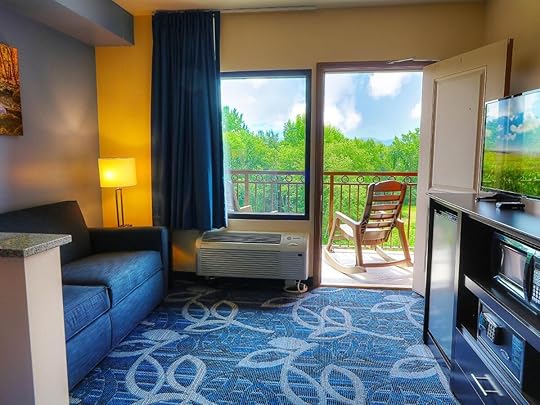
Photo: Booking.com

Photo: Booking.com

Photo: Booking.com
No Great Smoky Mountain National Park hotels are better suited to families than the Country Cascades Waterpark Resort. With multiple slides, a large pool, a kiddie pool, and a hot tub, this is the spot to let the kiddos – and the adults – unwind. Rooms are spacious and cozy, with space to lounge and views of the green mountains over yonder. It’s definitely the best of the Pigeon Forge Great Smoky Mountains National Park hotels if you plan to hit Dollywood since it’s equidistant between the theme park and national park. There’s no better place to feel like you’re at a beach resort in the heart of Appalachia.
Price: From $90 per night
Twin Mountain Inn and Suites
Photo: Booking.com

Photo: Booking.com

Photo: Booking.com

Photo: Booking.com
Overlooking the river and with mountain views on three sides, Twin Mountain Inn and Suites is the best of hotels near Great Smoky Mountains National Park for watching the sunrise (or sunset). There’s usually morning mist hovering over the hills as you enjoy the breakfast buffet, setting the mood for an unforgettable day in the park. If you spend a day outside the park, you can walk to Dolly Parton’s Stampede or the Old Mill shopping area, or hop a short ride over to the Dollywood theme park and The Grand Majestic Theatre. This is Pigeon Ford’s best hotel for couples, not only because of the views, but because it has a higher-end pool and lounge area and is very close to restaurants and nightlife in Pigeon Forge. Oh, and because many rooms include large hot tubs.
Price: From $71 per night
Margaritavilla Island Inn
Photo: Booking.com

Photo: Booking.com

Photo: Booking.com

Photo: Booking.com
Who doesn’t love a taste of Key West in Tennessee? The Margaritaville Island Inn is the bustling, fun, and perfectly convenient option for your trip to Great Smoky Mountains National Park. The amenities and attractions of Pigeon Forge are within walking distance, and the park itself is a mere 20 minutes away on Highway 321. The hotel features both an indoor and outdoor pool, a superb continental breakfast, and views that make you feel as though you’re in a high-rise penthouse in . . . well, Pigeon Forge. But given the nearby theme parks, that’ll do just fine.
Price: From $89 per night
Where to stay in GatlinburgOld Creek Lodge
Photo: Booking.com

Photo: Booking.com

Photo: Booking.com

Photo: Booking.com
In downtown Gatlinburg, the Old Creek Lodge offers the best of both worlds. It has quick and easy access to Great Smoky Mountains National Park and walkability to dining, shopping, and other amenities in the town center. Cozy up next to the fireplace in your room after adventuring, have a dip in the outdoor pool, and then wake up refreshed and hit the breakfast bar on your way back out for another day of playing in the park. This is a great pick among great Smoky Mountains National Park hotels for couples looking to experience both nature and a date night afterward.
Bonus: this property is available for a Booking.com Genius discount, so you’ll get points you can spend on future hotel stays when you book.
Price: From $114 per night
Edgewater Hotel and Conference Center
edgewater hotel great smoky mountains national park hotels

Photo: Booking.com

Photo: Booking.com
Edgewater Hotel and Conference Center is among the nicest hotels near Great Smoky National Park. Rooms have balconies overlooking the hills and the pool is an indoor-outdoor hybrid. The property is accustomed to large groups and business travel (so you know the WiFi is on point) and the downtown location means you can grab a nice meal before crashing for the night without venturing too far if your legs are sore from a day hiking in the park.
If you do want to do some exploration in town, the Mountain Mall, Space Needle, and the dining scene in downtown Gatlinburg are within walking distance. If you’re a remote worker or freelancer who usually needs to work a bit while traveling, but still want to get in full days in the park, Edgewater is a great option.
Price: From $129 per night
Bearskin Lodge on the River
Photo: Booking.com

Photo: Booking.com

Photo: Booking.com
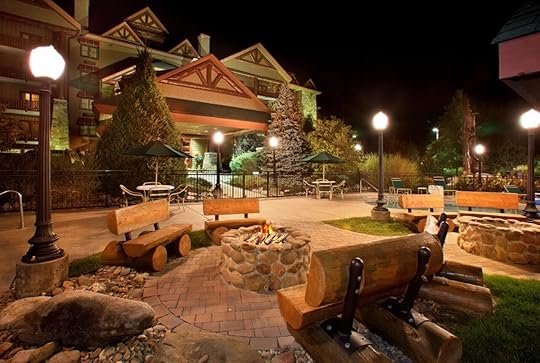
Photo: Booking.com
Who doesn’t love a lazy river after a day of hiking, biking, or sightseeing? Bearskin Lodge is home to Gatlinburg’s quaintest outdoor lazy river and pool, making this the best of the Great Smoky Mountains National Park hotels for families. The resort is between downtown and the park – which, of course, means more playtime for the kiddos and for adults and more time to relax and recover for another day of exploring. Rooms are cozy and clean, maintaining the rustic mountain aesthetic without sacrificing comfort. This is a great lodge for small groups and families.
Price: From $144 per night
Bonus: this property is also available for a Booking.com Genius discount when you book a stay.
Check out Matador’s guide to Gatlinburg Airbnbs for your trip to Great Smoky Mountains National Park.
Great Smoky Mountains National Park hotels near the southern entrancePanther Creek Cabins – Cherokee, North Carolina
Photo: Booking.com
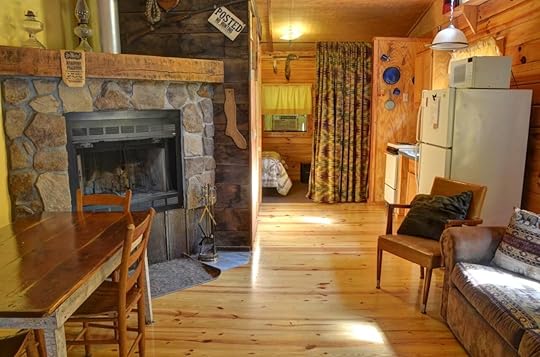
Photo: Booking.com

Photo: Booking.com
Cherokee, North Carolina, is full of cozy mountain cabins to serve as basecamps for a trip to Great Smoky Mountains National Park. But reviewers especially love the Panther Creek Cabins, which gives you both easy park access and an incredible lodging experience that embodies the true spirit of Appalachia. Hike the surrounding property, head into Cherokee for dinner, soak in the hot tub, or even do a bit of gambling up the street at Harrah’s Casino, if that’s your thing. You sacrifice by leaving WiFi and civilization behind, but you gain a truly immersive experience in the Smokies – something we could all use right about now.
Price: From $109 per night
Historic Tapoco Lodge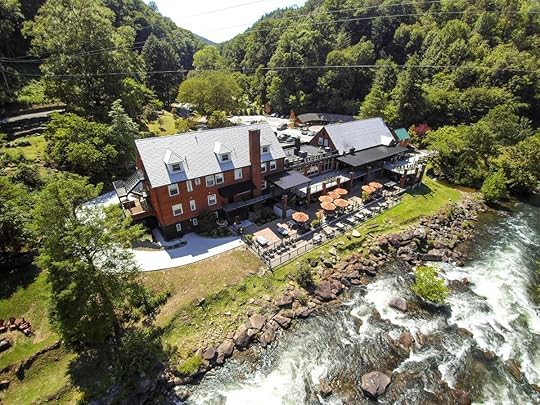
Photo: Booking.com

Photo: Booking.com
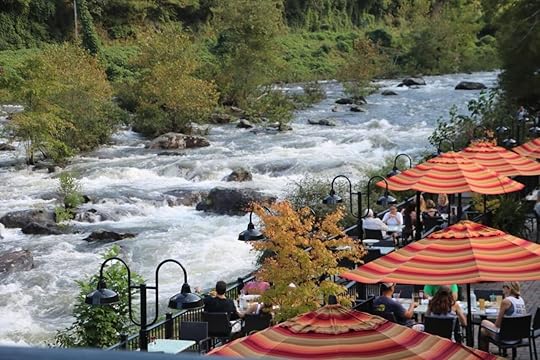
Photo: Booking.com

Photo: Booking.com
Far from the hustle and bustle of the Sugarlands entrance is the Historic Tapoco Lodge. It’s an ode to the good ole’ days of early tourism in the Smokies, back when it was all about getting out into nature and leaving the city behind. From the lodge, you can kayak Chilhowee Lake (actually more like a river), raft the Cheoah River, or see the lesser-traveled side of Great Smoky Mountains National Park. Be sure to grab a pizza and a beer from Tapoco Tavern one night, perhaps to celebrate being one of the few who actually hike their way into the park (you’ll be proud of yourself for skipping the line of traffic up north).
Price: From $159 per night
Staying in (or traveling through) Asheville? Check out Matador’s guide to the best Asheville Airbnbs. 
11 Gorgeous Florida Keys Airbnbs To Catch the ‘Keys Disease’

Fishing, snorkeling, and diving dominate the Florida Keys lifestyle. This chain of tropical islands stretches down across the Gulf of Mexico and provides pristine conditions for watersports. Out of the water, you can wind down at oceanview restaurants or with family feasts around the barbecue. Our pick of unique Airbnb Florida Keys will give you nothing but good times.
Florida Keys Airbnbs — MarathonUnique Houseboat Airbnb Florida Keys rentalsBest Florida Keys Airbnbs Sugarloaf KeyTop Airbnb on Cudjoe KeyTop Airbnb on Duck KeyMost luxurious Airbnb Florida Keys — IslamoradaWe hope you love the Airbnb Florida Keys rentals we recommend! Just so you know, Matador may collect a small commission from the links on this page if you decide to book a stay. Listed prices are accurate as of the time of publication.
Florida Keys Airbnbs — MarathonBeachfront villa with pool and dock
Photo: Airbnb

Photo: Airbnb

Photo: Airbnb

Photo: Airbnb
Constructed in a Polynesian style, this four-bedroom family home grants immediate access to the warm water of the Gulf of Mexico. The villa is fitted with a full kitchen, spacious bedrooms, a luxury bathtub, and a telescope. Sitting pretty within landscaped grounds with a private pool, basketball hoop, and private dock, this Marathon vacation home is a sanctuary.
Eight guests, four bedrooms
Price: $980 per night

Photo: Airbnb

Photo: Airbnb

Photo: Airbnb

Photo: Airbnb
We’ve found the ultimate luxury Airbnb in the Florida Keys! This Marathon vacation rental comprises two separate houses that share two swimming pools, a hot tub, and a Tiki hut. Located on a serene canal, there’s even a private beach when you fancy a snorkeling session – not forgetting your private dockage. The hosts will kindly stock the fridge with food and drink for the first day of the trip.
Sixteen guests, seven bedrooms
Price: $3,150 per night

Photo: Airbnb

Photo: Airbnb

Photo: Airbnb

Photo: Airbnb
This stylish contemporary home at Marathon’s Boot Key Harbor comes with a pool, outdoor showers, patio deck, and rooftop terrace for maximum sunshine access. The grill is integrated with a bar where you can blend a pitcher of margaritas with a view. There’s a dock for you to bring your boat and you can fish directly from the pier. Coastal-chic living spaces and guest rooms ensure a zenful stay.
Ten guests, four bedrooms
Price: $700 per night
Traveling to Florida? Check out Matador’s Florida accommodations guides:15 beautiful Florida Airbnbs for every type of travelerThe best 11 Airbnbs near Universal StudiosThe 12 best Miami Airbnbs from South Beach to Little Havana8 of the coolest Airbnbs near Disney World, Florida15 beautiful Florida Airbnbs for every type of traveler6 Kissimmee Airbnbs for a multi-generational family Disney trip11 Key West Airbnbs to experience the best of the island“Serenity” vacation rental with pool, tiki hut, and dockage

Photo: Airbnb

Photo: Airbnb

Photo: Airbnb

Photo: Airbnb
Sited within the peaceful Dolphin Drive community this tropical-themed Marathon bungalow has its own jetted pool plus a tiki hut. Your rental includes two kayaks, two bikes, and 30 feet of dockage. Dogs are welcome at this pet-friendly Airbnb in the Florida Keys. Interiors are colorful and comfy although you should expect to spend most of your stay basking outdoors under the Floridian sun.
Six guests, two bedrooms
Price: $350 per night

Photo: Airbnb

Photo: Airbnb

Photo: Airbnb

Photo: Airbnb
Handy for the airport, this cute yellow bungalow offers direct water access. The Gulfside property’s backyard is fitted with a pool, a hot tub, and a 35-foot dock. Besides the two en suite guest suites, you’ve got a plush lounge with a separate “den” for indoor downtime. Keep your eyes peeled for the manatees that dwell in the canal.
Six guests, two bedrooms
Price: $260 per night

Photo: Airbnb

Photo: Airbnb

Photo: Airbnb

Photo: Airbnb
Sail away with Captain Josh on this luxury catamaran Florida Keys Airbnb. Three self-contained cabins provide comfy lodgings for couples, families, and groups. With the exception of alcohol, the hire fee is fully-inclusive of fuel, groceries, and recreation supplies including fishing gear and snorkels. Chat with First Mate Jami about the menu and she’ll tailor-make all meals to suit your tastes. And the itinerary? It’s over to you.
Six guests, three bedrooms
Price: $2,000 per night

Photo: Airbnb

Photo: Airbnb
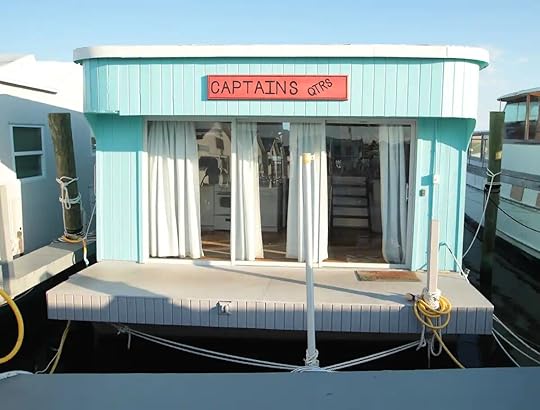
Photo: Airbnb

Photo: Airbnb
When the views look like this, there’s no need to hit the high seas. This Florida Keys Airbnb houseboat is spread over an open-plan lounge and kitchen with a separate bedroom. The living space benefits from French sliding doors that reveal your private balcony and front-row seats at sunset. Dogs are welcome for a modest surcharge. The boat is docked part way between Key Largo and Islamorada – head this way for more Airbnb Key Largo picks.
Four guests, one bedroom
Price: $400 per night

Photo: Airbnb

Photo: Airbnb

Photo: Airbnb

Photo: Airbnb
This one-of-a-kind beach house is set upon a secluded sandy beach that might convince you that you’ve rented a private island. Conditions are perfect for swimming, snorkeling, kayaking, and paddle boarding; rest assured, the host provides all the necessary gear. Soak up views from the balconies or hammock and feel free to use the Tiki bar and pool at the sister property. Sugarloaf Key is only 30 minutes away from Duval Street: check out our selection of Key West Airbnbs if you want to stay in the center of the action.
Eight guests, two bedrooms
Price: $1,200 per night

Photo: Airbnb
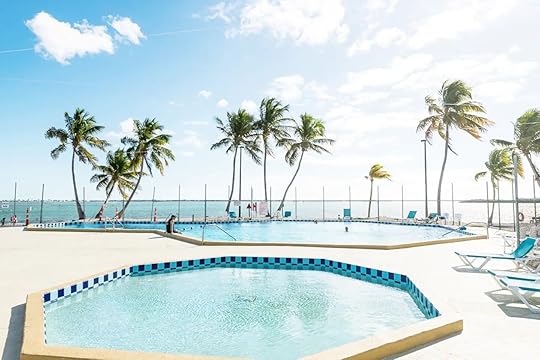
Photo: Airbnb

Photo: Airbnb

Photo: Airbnb

Photo: Airbnb
Located at Cudjoe Key’s Venture Out Residential Condominium Community, this nautical-themed cottage is right on the water. You’ll have complimentary use of the property’s kayaks and bikes plus access to use at leisure. Shared amenities within the complex include swimming pools, a hot tub, and sports grounds. Interiors are tastefully fashioned on the underwater world and the host leaves no stone unturned.
Six guests, two bedrooms
Price: $760 per night

Photo: Airbnb

Photo: Airbnb

Photo: Airbnb

Photo: Airbnb
Choose this Duck Key Airbnb if you want a chilled base in a community setting for your vacation. Whip up gourmet feats in the chef-quality kitchen or on the grill and dine on the porch with a view of the pool and the soundtrack of birdsong. Rental includes access to a private 35-foot dockage. With a fully fenced-in backyard and a pool framed by palm trees, Sanctuary Villa is the perfect family vacation letting.
Ten guests, four bedrooms
Price: $700 per night

Photo: Airbnb

Photo: Airbnb

Photo: Airbnb

Photo: Airbnb
This custom-built home is situated on a private beach that overlooks the Atlantic Ocean. If that’s not enough, the backyard comes with a lap pool. Hammocks, a fire pit, and a Tiki hut on the sand add to the ambience. Bicycles, kayaks, paddleboards, and tents are included in the rental. Interiors are elegantly appointed with quality upholstery and furnishings. You’ll need to commit to a minimum of seven days but in reality, you’ll probably never want to leave. 
Twelve guests, five bedrooms
Price: $4,150 per night
7 Affordable Summer Vacations To Take This Year, From the Caribbean To Montana

You don’t need a big budget to book a last-minute getaway this summer. Whether you and your travel partner enjoy hiking, sailing, the city, or just lazing on the beach, you can make the most of these seven summer vacations in some of North America’s most scenic spots without spending a huge amount of money — if you plan correctly.
From snorkeling in the Caribbean to hiking in Montana, these are seven affordable getaways to take this summer.
We hope you love the spaces and stays we recommend! Just so you know, Matador may collect a small commission from the links on this page if you decide to book a stay. Listed prices are accurate as of the time of publication.
Old world charm in Quebec City, Quebec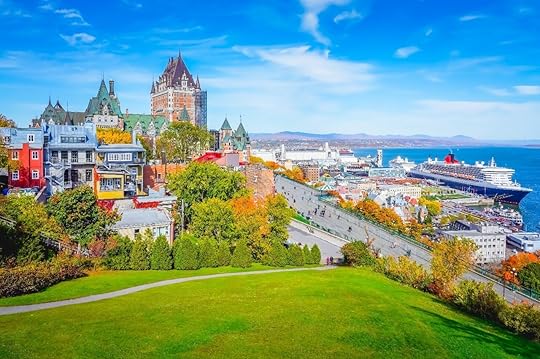
Photo: iPIX Stock/Shutterstock
Four centuries of French-Canadian history infuse Old Quebec with a fairytale atmosphere. Quebec’s Historic District’s cobblestone streets, stone buildings, and fortified city walls whisk visitors back in time. All you need to do is brush up on your French and let the cultural immersion begin.
You can see the most important landmarks on a free self-guided audio tour. Or book a guided walking tour for $18 to $28 per person. If you’re interested the food scene of the city, an immersive Taste of History Walking Tour includes samples of Québécois cuisine for $56 per person.
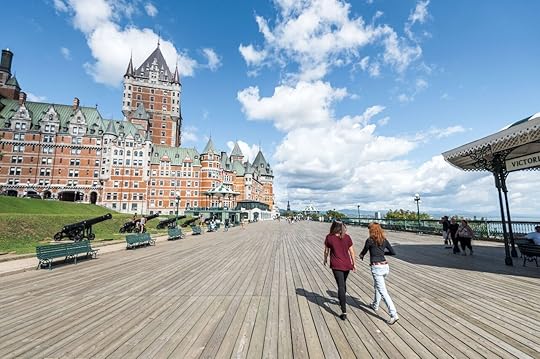
Photo: Québec Cite/Jeff Frenette
The streets of Old Quebec are lined with boutiques, gourmet food shops, and romantic bars and bistros. Stop for a drink (try a local cider or sortilège, a Canadian maple whiskey liqueur) or an intimate and affordable multi-course prix fixe lunch. Try the cassoulet, rabbit poutine and maple crème brûlée on the terrace at Le Lapin Sauté or an elegant champagne brunch or the fresh, seasonal table d’hote menu at Rioux & Pettigrew.
Take the funicular to shop for locally made toques, moccasins, art, and clothing in Le Quartier Petit Champlain, North America’s oldest shopping spot. Or climb the Breakneck Stairs, which is popular for photos. For water views, hop on the ferry and sail across the St. Lawrence River for under $8 for a round-trip.

Photo: Québec Cite/Claude Bouchard
Many of Quebec City’s warm weather events — such as art installations, parades, and festivals — are free. Don’t miss buskers and free Thursday night fireworks on The Dufferin Terrace, a riverside boardwalk near the majestic Château Frontenac, one of the most photographed hotels in the world.
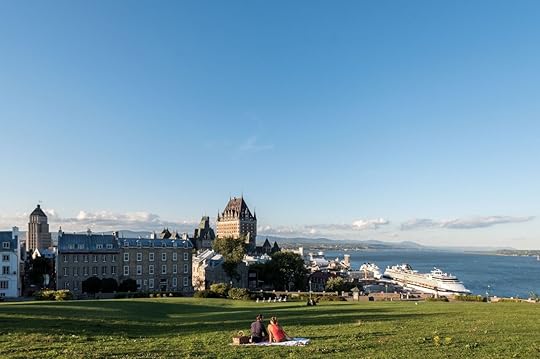
Photo: Québec Cite
You can pick up a picnic at Grand Marché de Québec or at a local farmers market and unwind in Bois-de-Coulonge Park, on Pierre-Dugua-De Mons Terrace, or bring the provisions back to your rental.

Photo: Airbnb

Photo: Airbnb
Both this light loft Airbnb ($103 per night) and this sunny studio ($86 per night) offer fully stocked kitchens, so you can enjoy dinner and a glass of local wine on the patio after a day of sightseeing.
An atmospheric city break in San Francisco
Photo: Margaret.Wiktor/Shutterstock
Steep hills, colorful Victorian houses, atmospheric fog, and Pacific Ocean views make San Francisco the perfect spot for a getaway. And contrary to popular belief, it is possible to visit San Francisco without spending your entire paycheck.
See some of city’s most iconic sites from one of its signature cable cars. Purchase a visitor passport for unlimited Muni Metro Light Rail and cable car transportation for a day ($24) or three days ($36). You can enjoy some of the best views of the Golden Gate Bridge, live music in Union Square, and skirt Chinatown, one of the largest Chinese communities outside of Asia and the oldest in North America.
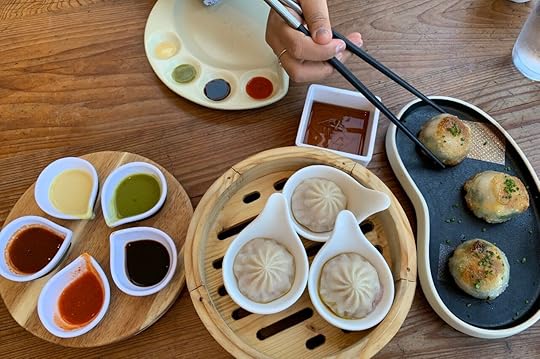
Photo: 1000Photography/Shutterstock
Get off between Bush and Jackson to visit the shops, noodle joints, Hong Kong-style cafes, and dim sum restaurants. City View Restaurant and Good Mong Kok Bakery are some favorites. To get the most out of your time in the neighborhood, book a free walking tour (one of 80 tours in the city) or try a Wok Wiz walking tour, which includes a dim sum lunch for $55 per person.
Continue to Fisherman’s Wharf to greet the sea lions on Pier 39, and treat yourself to chocolate at Ghirardelli Square. Grab lunch among the musicians at The Cannery or book a one-hour harbor tour ($36) to see the city from the water. Or take a three-mile walk to Crissy Field and stroll the waterfront, enjoy the beach, and score excellent views of the Golden Gate Bridge.
In the evening, head to The Mission for craft cocktails, gourmet ice cream, colorful murals, and people-watching in Mission Dolores Park. Or if you are sports fans, you can watch the Giants play baseball at Oracle Park, tickets start at $17.

Photo: Booking.com

Photo: Booking.com

Photo: Booking.com
Stay in the heart of the action at the Edwardian Hotel ($115 per night), a boutique property in a historic building just off Market Street and near the F tram line.
Rocky Mountain splendor in Glacier National Park, Montana
Photo: El Nariz/Shutterstock
Dramatic Rocky Mountain vistas, scenic drives, and over 700 miles of trails make Montana’s Glacier National Park a brilliant choice for couples who are happiest outdoors. Spend your days hiking through wildflowers, spotting bighorn sheep, moose, and frolicking goats, watching crashing waterfalls, and cooling your feet in alpine lakes.
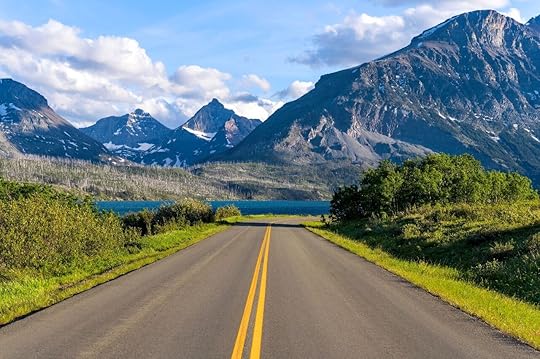
Photo: Sean Xu/Shutterstock
Start on the almost impossibly scenic Going-To-The-Sun-Road. Watch the waterfalls along the Weeping Wall, stop to view the glacier from Jackson Glacier Overlook, and take photos from Wild Goose Island Viewpoint — one of the most popular stops along the 50-mile route. To prevent overcrowding, advance reservations are required from May 27 through September 11, 2022.
Then lace up your hiking boots and hit the trails. Enjoy alpine peaks and meadows on the way to Hidden Lake Overlook (2.6 miles) or Hidden Lake itself (5.2 miles). Grinnell Glacier Trail, an 11.2-mile out and back trek, rewards hikers with views of glaciers and waterfalls. Apikuni Falls is much shorter (1.7) and so easy that kids can do it. If you don’t have a vehicle, a free shuttle is available along Going-to-the-Sun-Road.
After hiking cool off in Lake McDonald or a local swimming hole or book a multi-lake boat tour that also includes a guided hike ($35).
When you’re hungry, head to off-the-grid Polebridge for bison burgers, beer, and live music at The Northern Lights Saloon. Try a club sandwich, pie, or cobbler accented with huckleberries (Montana’s state fruit) on the patio at Eddie’s Café and Mercantile in West Glacier. While you’re there, pick up groceries, wine, and beer and head back to your rental.

Photo: Airbnb
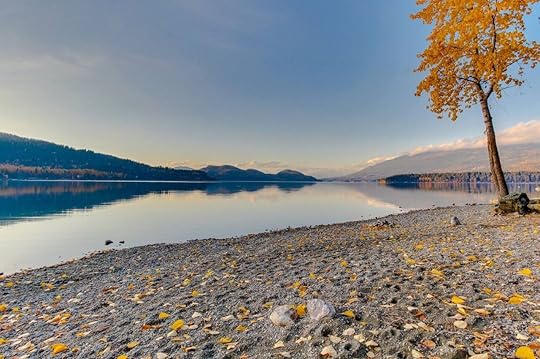
Photo: Airbnb
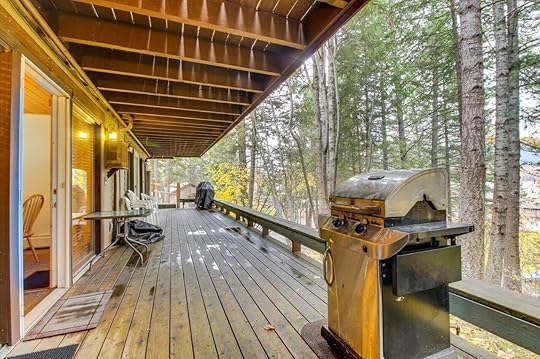
Photo: Airbnb

Photo: Airbnb
Treat yourself to a mountain view farm stay in Kalispell ($121 per night) or a lake view condo ($116 per night) with a private deck and fireplace in Whitefish. Both offer fully equipped kitchens and a hot tub.
A beachy culture trip in San Juan, Puerto Rico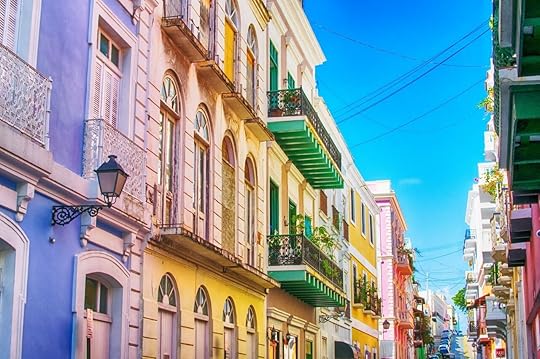
Photo: fldlcc/Shutterstock
Ocean-side historic sites, lively restaurants, and a vibrant art scene make San Juan a culture lovers’ paradise.
Start your exploration on the blue cobblestone streets of Old San Juan. Sip coffee on a shaded plaza or snack on corn fritters, fried plantains and croquettes, and a frosty piña colada at Barrachina, which (along with Caribe Hilton) claims to be the beverage’s birthplace (though there are plenty of great piña colada places in San Juan). Try ropa vieja (beef stew) and Puerto Rican rum at Princesa Gastrobar, a magical spot tucked into the trees along the Paseo de La Princesa boardwalk.
Follow the boardwalk through the city gates and along the stone walls to the forts of San Felipe del Morro and San Cristóbal. The view of the candy-colored colonial buildings and glittering Atlantic alone are worth the $10 admission.

Photo: Polina LVT/Shutterstock
Head to Santurce for colorful street art murals and modern art at the Museo de Arte Contemporáneo de Puerto Rico ($5). Walk to the nearby Museo de Arte de Puerto Rico ($6) to take in 17th and 18th-century art and a peaceful sculpture garden.
Picnic on the generous golden beaches of Isla Verde, just outside the city limits. Also worth a visit is La Playita del Condado, just east of the Ashford Avenue Bridge, is a tiny little beach inlet perched in the middle of San Juan. Cool off with coconut water, a piragua (shaved ice with syrup), or Medalla Light after a day in the sun.
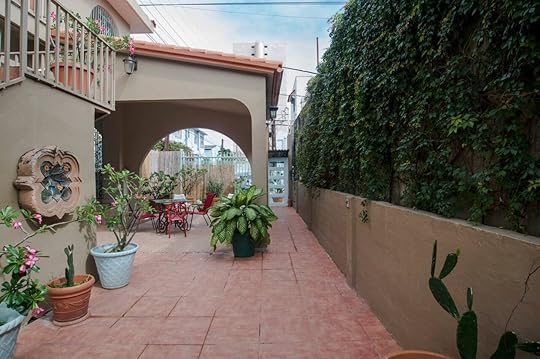
Photo: Airbnb

Photo: Airbnb
Many of San Juan’s affordable vacation rentals offer easy beach access. Both this cheerful apartment ($95 per night) and this bright one-bedroom ($80 per night) are in Ocean Park, just a short walk from the beach. They also include full kitchens and gracious patios with hammocks and lush, tropical greenery.
Wine, art, and nature in Ashland, Oregon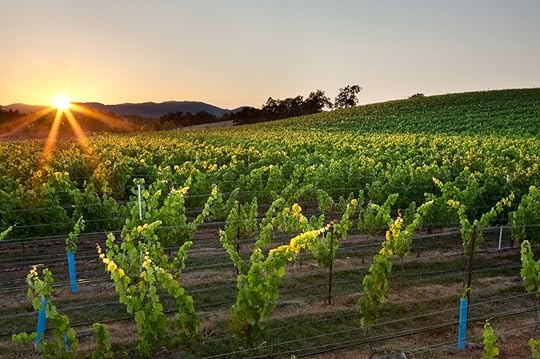
Photo: Travel Southern Oregon/Shutterstock
Dubbed “the next Napa” and hailed as one of the top small art towns in the country, Ashland is tucked between the Siskiyou Mountains and the Cascades. It’s known for the Oregon Shakespeare Festival, excellent wine, a robust food scene, and gorgeous mountain hiking, biking, and trail running routes, including the Pacific Crest Trail.
Pick up local produce, honey, and baked goods at Rogue Valley Growers and Crafters Market every Tuesday and Saturday, March through October. Have a picnic among the duck ponds, roses, and sycamore trees in Lithia Park or hike and bike the trails.
For a more challenging hike, tackle part of the 10-mile section of the Pacific Crest Trail that runs from Interstate 5 to Mount Ashland. Slow down to appreciate the birds, butterflies, wildflower meadows, and the views of Mt. Shasta along the way.

Photo: Travel Southern Oregon/Shutterstock
Make sure to check out the seasonal calendar for Oregon Shakespeare Festival. Tickets start at $35.
Leave plenty of time for tastings at Ashland wineries. Day trip into the Southern Rogue Valley to sample pinot noirs and malbecs or stop by the Ashland Chamber for a map of the self-guided Oregon Wine and Farm Tour.

Photo: Ashland Hills Hotel and Suites

Photo: Ashland Hills Hotel and Suites
Ashland Hills Hotel and Suites has rooms that are both luxurious and comfortable. Suites start at just $113 and include complimentary continental breakfast and use of the outdoor pool, hot tub, and tennis and pickleball courts.
An island cruise to The Bahamas
Photo: Carnival Cruise Line
Cruising can be an economical way to see the world depending on the cruise line. And The Bahamas, an island nation around 180 miles southeast of Miami, is an affordable destination on many US cruise lines. Its turquoise waters, white-sand beaches, and bustling markets offer travelers a stress-free getaway.
Many cruise lines offer deals for budget-conscious consumers, so it’s worth it to compare prices. For example, a five-night Carnival Sunshine cruise departing from Charleston comes in at just $408 per couple.
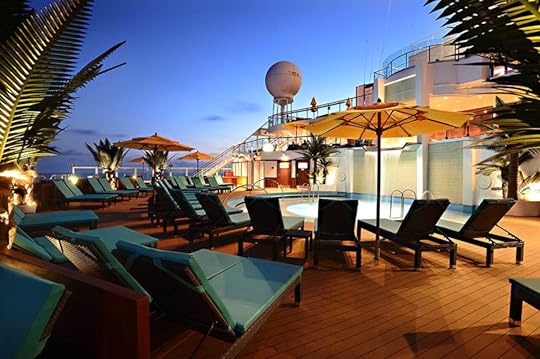
Photo: Carnival Cruise Line
This rate includes meals in several onboard restaurants, as well as entertainment and activities like cooking demos and poolside movies. You’ll also get free access to water slides, mini-golf, live musicals, a fitness center, and a comedy club, so you’ll have plenty to do while at sea.

Photo: Denis Moskvinov/Shutterstock
The route takes passengers to Half Moon Cay, a private island where you can relax in a hammock or swim in the warm, turquoise waters. Like many other cruises, this one also stops in Nassau, the capital city where you can visit the National Art Gallery of the Bahamas and learn about Bahamian art and culture and purchase locals crafts and gifts.
Nature in bloom in Door County, Wisconsin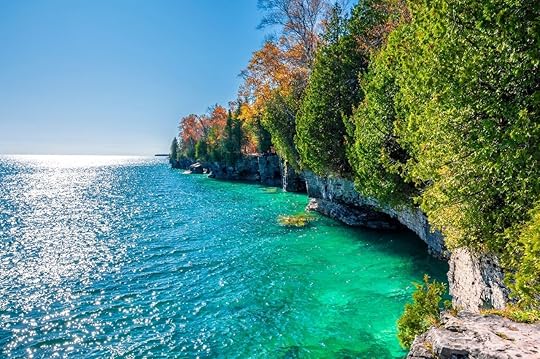
Photo: Nejdet Duzen/Shutterstock
Cherry blossoms burst into bloom from mid-May until June, sheltering this 80-mile peninsula between Green Bay and Lake Michigan under a canopy of flowers. Door County also is home to over 100 art galleries, five state parks, and pretty towns and villages.
Purchase an annual vehicle pass ($38) and score admission to all Wisconsin state parks. The lighthouse at Whitefish Dunes State Park is worth a visit and Peninsula State Park has an accessiable canopy walk above the tree line.
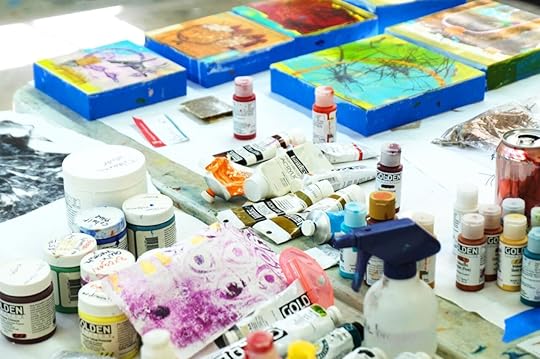
Photo: Peninsula School of Art

Photo: Peninsula School of Art
If you’d rather explore the local art scene, you can see works by Wisconsin artists at The Miller Art Museum and find exhibits and classes at Peninsula School of Art. Admission is free at both locations.
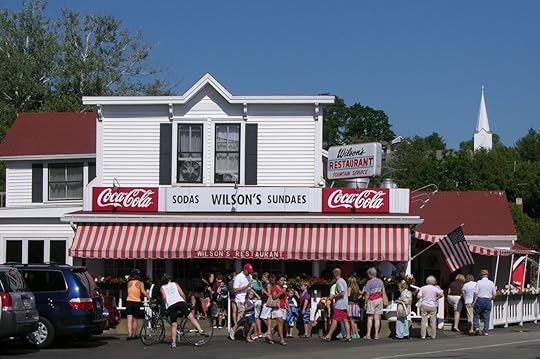
Photo: Wilson’s Restaurant and Ice Cream Parlor
The region’s signature Montmorency cherries flavor desserts, entrees, and cocktails (including the Wisconsin Old Fashioned) can be enjoyed at bars and restaurants all over the peninsula, but save room for a frosty mug of handcrafted root beer and an icecream sundae from Wilson’s Restaurant and Ice Cream Parlor, a favorite since 1906.
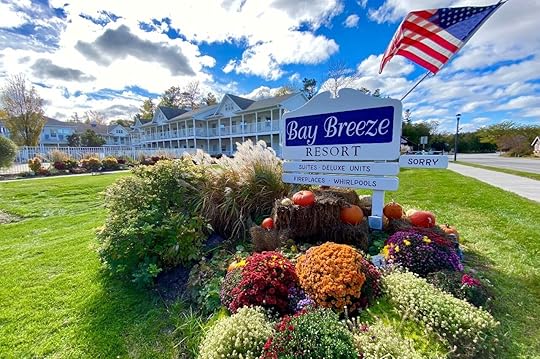
Photo: Bay Breeze Resort
Watch the sunset from the private beach at Bay Breeze Resort ($115 per night). Accommodations are homey, but the amenities — heated outdoor pool, balcony, gas fireplace, whirlpool tub, and rain shower — add a modern touch. 
Here’s Why I Prefer To Always Fly Budget Airlines Over Major Carriers

I started traveling regularly when I lived in France and worked at a job that paid hardly anything but offered lots of vacation time. Keeping to a strict budget was the only way I could afford to travel farther than my front door. Every dollar I saved meant I could travel further and longer, and flying budget airlines were one of the easiest ways to keep costs low.
As I got better jobs, my travel budget increased, but a funny thing happened: even as I moved on from hostels and grocery store dinners, I stayed loyal to budget airlines. Part of the reason was financial; I still have to keep to a budget, and flights are often the biggest single expense of a trip.
But those years of flying cheap also taught me that budget airlines are just a great way to travel. I still happily climb aboard those neon Spirit Airlines planes (which suspiciously seem to be the same color yellow as the lines they paint on roads) and fly with budget airlines whenever I can. And despite regular ribbings from friends and family for sticking with low-cost airlines, I know I’m coming out ahead in more ways than one.
Here are five reasons budget airlines actually give you the best flying experience:
Low Expectations = Happier FlightsThey say the key to happiness is lowering your expectations. Budget airlines will start you on that path to eternal contentment. When I book a flight on a budget airline, I head to the airport knowing that I sacrificed comfort for value, and I’m mentally prepared for whatever sort of nonsense gets thrown at me that day. And if the flight goes well (which it often does)–then it’s a double win: I got a smooth flying experience at a budget price. On major airlines, you go in expecting a pleasant experience, and when something goes wrong (which it often does), you’ve lost both comfort and affordability. But what if everything goes well? You only got what you expected from that airline, so you aren’t particularly happy. It’s a recipe for disappointment.
You’ll Only Pay for What You WantThe cost of flying has skyrocketed recently, and if you book with a major carrier, even the cheapest package, you’re paying for things you probably don’t need like a plastic cup of soda, extra space in the overhead bin, those tiny bags of pretzels, etc. When you fly with a budget airline, you’re not paying for a single thing you don’t want. If you want an in-flight meal, extra bags, or priority boarding, then you can pay for those things, but budget airlines are pros at keeping the essentials to a minimum. That means you don’t waste a single dollar.
The Seats Don’t ReclineIf this seems like a major issue to you, then you’ve never had the circulation in your legs cut off because the person in front of you reclined their seat alllll the way back. Reclining seats can mean your neighbor’s head is practically in your lap, you can’t access your bag on the floor, and sometimes you can’t even get out of your seat without politely asking the person in front of you to move their seat back up. Reclining seats have a long, fraught history of causing disputes on airplanes. However, this isn’t a problem you’ll ever need to deal with on a budget airline–because none of the standard seats recline! Take that concern right out the window because they bolted these seats to the floor.
Budget Fliers Bond TogetherOn regular airlines, the people around you are annoying. They mess with the armrests, play games on their phone with the sound on and no headphones, cough without covering their mouths…This is still true when you fly a budget airline, BUT there’s an upside, too. When you book a flight on a budget airline, you know you’re being a tightwad, and you know everyone else on the flight is, too. This communal cheapness creates an instant bond between passengers. We’re all in this metal sky bird together. Flight attendants will add this vibe, peppering their standard safety announcements with in-jokes that people who fly posher airlines wouldn’t understand. On one Spirit flight I took to Las Vegas, the flight attendants basically emceed the entire flight, giving recommendations for what to do in town and recounting misadventures on the Strip. It was more entertaining than any in-flight movie.
You’re Not Compromising SafetyThe one thing you don’t want to risk when you’re flying is your safety. Fortunately, budget airlines are just as safe as the major airlines. The airline safety website AirlineRatings states that the major American budget airlines have practically identical safety records to those of the full-service airlines. All of them are COVID compliant, none have had a fatal crash within the last ten years, and none have a history of serious pilot-related incidents. Additionally, all have at least six out of seven stars for their overall safety record. So you can breathe easily: saving money on a budget carrier doesn’t mean sacrificing your safety. 
The Best Hikes in Michigan’s Upper Peninsula To Explore This Summer

Michigan’s Upper Peninsula is a hiker’s paradise like none other. For those who love misty waterfalls, dense forests, rugged terrain, and endless lakeside vistas, the UP is worth a trip.
Most of the peninsula’s famous hikes are easy to find. The UP’s trails run from easy half-mile loops to challenging 20-mile-plus treks up steep mountains. An abundance of wildlife thrives here, which adds to the thrill.
Although hiking is possible throughout the year, the UP experiences brutal winters, torrential storms, and pesky bugs in the summer. It’s also not the most forgiving terrain. Lack of cellphone reception, unpredictable weather, and remoteness are other safety factors that hikers must take into consideration. Regardless of the challenges, a hiking trip to the UP can be an unforgettable adventure. Here are the top Upper Peninsula hikes to try this summer.
Chapel Loop – Munising
Photo: KYPhua/Shutterstock
Few places in the lower 48 are more stunning than Pictured Rocks National Lakeshore. Within this densely forested coastal wilderness, is one of Michigan’s best upper peninsula hikes. The moderately strenuous 10.2-mile loop takes hikers through a range of natural landmarks, including two waterfalls: the dramatic Chapel Falls and the smaller Mosquito Falls.
The coastal side of the trail opens up through the birch forests to unbeatable views of Lake Superior and the Pictured Rocks. After it hugs the cliffs above the lake, the trail snakes down to Chapel Beach on the northern end and Mosquito Beach on the south. Chapel Loop is also perfect for spotting wildlife. However, be aware. Black bears are a common sight here. Like anywhere in the UP, pack up your food and waste.
Dogs are not welcome on these trails. The trailhead starts and ends at the end of Chapel Road.
Lake of the Clouds and Escarpment Trails
Photo: John McCormick/Shutterstock
The Lake of the Clouds trail, near the town of Ontonagon, is an easy 1.8-mile trail that descends to the Lake of the Clouds. Stunning views of the small lake and the surrounding forest open up from several vantage points. For bird watchers, this trail is unbeatable. Hikers and birdwatchers can climb down to the lake and the Big Carp River. Within the valley, wildlife roams undisturbed.
The steep Lake of the Clouds trail connects to the trails of the greater Porcupine Mountains, including the famous Escarpment Trail. This challenging 8.4-mile trail takes hikers along the ridge above the Lake of the Clouds and Big Carp River. The trail climbs up two 1500’ peaks, Cloud Peak and Cuyahoga Peak, and descends around 600’ to the 107th Engineers Memorial Highway.
Dogs are welcome if on a leash. A Michigan Recreation Passport is required for vehicle entry.
Sugarloaf and Hogback Mountains
Photo: Craig Sterken/Shutterstock
With sprawling vistas of Lake Superior and the Escanaba River State Forest, this easy hike is unforgettable. Sugarloaf trail loops up the side of the 1040’ Sugarloaf mountain. The loop covers 1.4 miles of pine forest. Enormous boulders protrude from the side of the trail and provide shelter for large and small animals. Near the summit, a well-maintained staircase brings you to the top. Here, the wide expanse of the UP’s unspoiled forest opens up around you. The wide-open forest view accompanies the wild coast of Lake Superior and Partridge Island.
For a more advanced hike, head a half-mile north to the Wetmore Pond Nature Trail Parking lot. The trailhead for the incredible Hogback Mountain starts and ends here. The well-marked trail takes hikers through a quiet forest and a 600-foot elevation gain to the top of a large hill. At the rocky summit, the view is panoramic and encompasses the surrounding State forest and other nearby peaks. Another draw for some hikers is the lack of crowds that plague Sugarloaf Mountain.
Dogs are welcome on a leash.
Wetmore Landing Shoreline
Photo: via Aaron Peterson and Travel Marquette/Shutterstock
Michigan has the best shoreline hikes in the country. The UP’s Wetmore Landing is one of them. The out-and-back trail runs 3.6 miles from Wetmore Landing parking lot to the Little Presque Isle Point. Here, hikers can wade through the shallow water to the little rocky island offshore. The trail beautifully winds between birch and pine trees that stand along the rocky escarpment. Petrified trees and scraggly rock formations dot the inaccessible shoreline. If you can find it, there’s a narrow trail to Hidden Beach, one of Marquette’s most beautiful stretches of sand, either being one of the best Upper Peninsula hikes.
Tahquamenon Falls
Photo: Big Joe/Shutterstock
The UP’s most famous waterfall also has amazing hiking trails. Begin the out-and-back hike by the main Tahquamenon Falls parking lot. The well-maintained path leads to the majestic upper falls. These cascades are a perfect backdrop for photos. After braving the hordes of tourists, hikers can enter the beautiful river trail, which runs along the river for five miles. The trail ends at the lower falls, which are less dramatic and less touristy than the upper falls. After hiking five more miles to return to the parking lot, enjoy a cold beer and food at the Tahquamenon Falls Brewery.
Requires Michigan Recreation Passport for vehicle entry. Dogs are welcome on a leash.
More like thisWinter SportsThis Winter Bike Race Showcases the Warm Culture of Icy-Cold Marquette, MichiganThe 7 Best Italy Wine Tours for Cycling Your Way Through Vineyards
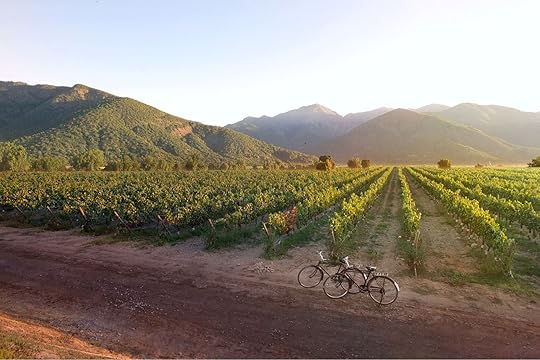
The typical conception of Italy’s wine country is usually sitting on the veranda of a Tuscan villa, sipping red wine while overlooking the rolling vineyards. There’s nothing wrong with that idyllic scene, but to spice things up a bit and get the most out of wine country, take the sipping show on the road with an Italy wine tour via bicycle.
Don’t worry – it doesn’t have to be on a Tour de France pace. On most tours, cyclists will be pedaling at a leisurely pace down some of the Italian wine country’s most bucolic landscapes, visiting old villages, and tasting local wine and food along the way. Nearly all cycle-based Italy wine tours come with a support vehicle to carry your wine, carry you, or carry both, if you end up tasting one too many varietals.
These are the best Italy wine tours on two wheels.
Best classic Italian wine tour: The Wine Ride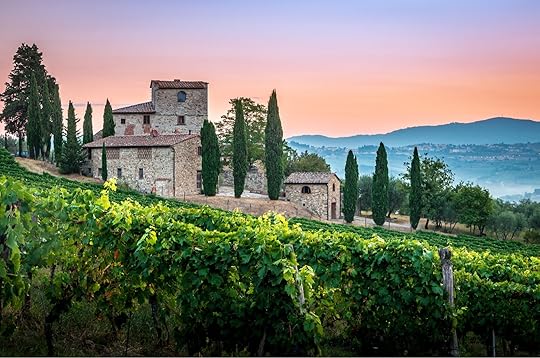
Photo: Bogusz Strulak/Shutterstock
Duration: 1 dayStarting point: FlorenceEnding point: FlorenceTuscany’s Chianti wine region is probably the most famous in Italy, and The Wine Ride is the perfect Italy wine tour if you’re looking for a relaxed way to see the sights of the Chianti region. From Florence, you’ll be transported to the Tuscan countryside to begin cycling through vineyards, olive groves, and old stone farmhouses, stopping at three popular wineries for tastings. A visit to the medieval town of Castellina in Chianti is also included, as well as a light lunch featuring local food and wine pairings from regional wineries.
Best educational tour: Tuscany Wine Lovers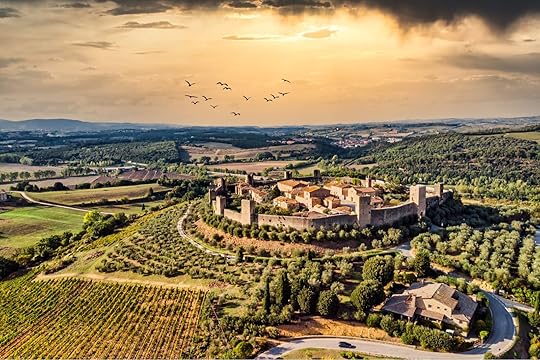
Photo: Nektarstock/Shutterstock
Duration: 1 dayStarting point: FlorenceEnding point: FlorenceThe Tuscany Wine Lovers tour isn’t a misnomer — it’s an ideal Italy wine tour for travelers who want to gain some in-depth vinicultural knowledge. From Florence, you’ll be driven to the Chianti countryside to visit medieval towns – with time for some shopping – and take a bike tour that includes three wine tastings. For your first stop, you’ll sample Tuscan wines as well as wines from other regions in Italy. The second stop includes a visit to an antique cantina, accompanied by four wines and a tasting of some local extra-virgin olive oil. The tour ends with a visit to Monteriggioni, a medieval walled village surrounded by olive groves and vineyards, where you’ll enjoy your third wine tasting.
What’s especially unique about this tour is that you won’t be tasting the same wines over and over. You’ll taste your “standard” chianti red blends, as well as sangiovese, and even a vernaccia (a crisp, acidic white) — not exactly what you expect to find in the Chianti region. This is a great Italy wine tour if you want to learn more about the diversity of wine in Italy’s most well-known wine region (and learn about olive oil production to boot).
Best coastal tour: Tuscany Coast & Wine Bike Tour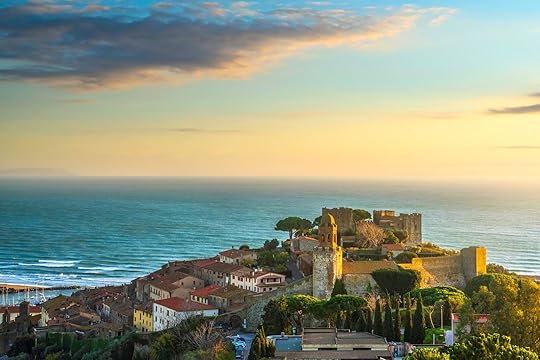
Photo: StevanZZ/Shutterstock
Duration: 5 daysStarting point: VolterraEnding point: BolgheriCentering around the Etruscan Coast, the Tuscan Coast & Wine Bike Tour brings you from Volterra – known for mining and alabaster – to the Tuscan coast. The landscape ranges from sandy beaches to a countryside dotted with olive trees and vineyards. You’ll also be cycling through Bolgheri, a wine region home to the Ornellaia and Sassicaia labels. The highlight, however, is probably the Maremma region, a relatively wild and untouched area of the country.
Best for art lovers: Chianti by Bike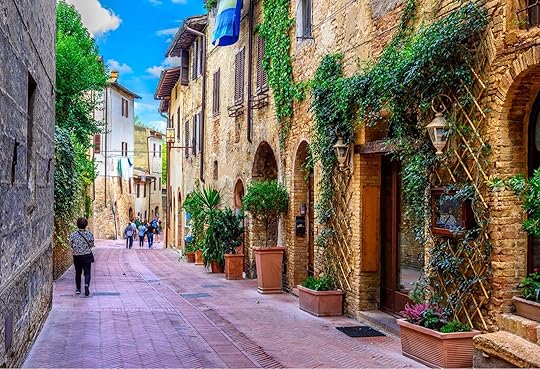
Photo: Catarina Belova/Shutterstock
Duration: 7 daysStarting point: FlorenceEnding point: FlorenceThe weeklong Chianti by Bike tour is a perfect Italy wine tour if you want to spend multiple days exploring Italy’s wine region in a truly comprehensive experience. From Florence, you’ll be driven to Radda, Chianti, t begin cycling. The tour brings you through Siena, San Gimignano, and Certaldo, passing scenic mountain ridges, medieval wineries, gothic cathedrals, vineyards, and olive groves. Gourmet dinners are also included, as are visits to galleries containing priceless art and a visit to the Italy National Wine Museum. So you’ll have your fair share of delectable food and cultural sightseeing in addition to wine.
Some days are spent cycling while others are more about touring on foot, so it’s a good Italy wine tour if you want a longer trip but worry that your legs can’t take a full week of pedaling.
Best for mixed groups: Tuscany Bike Tour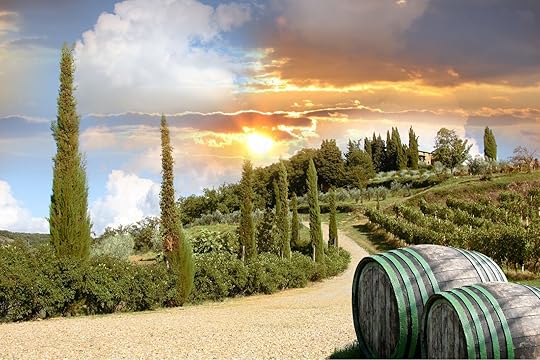
Photo: Tomas Marek/Shutterstock
Duration: 1 dayStarting point: FlorenceEnding point: FlorenceThis short tour is perfect for those who only have one day in Florence or only want a brief wine jaunt through Tuscany. The six-hour Tuscany Bike Tour takes you from Florence into the Chianti hillside, where you’ll ride bikes (either regular or e-bikes) along a route lined with farmhouses, vineyards, churches, and castles. It’s roughly a 10-mile tour and stops at world-renowned wineries, wine cellars, and a local restaurant for lunch with wine pairings from area wineries.
If you’ve never cycled before, opt for an e-bike during the tour — you can pretty much guarantee not having to do much work. But if you do want your Italy wine tour to be about a bit more than just imbibing, choose a regular bike without any e-assist. It’s a great tour for groups with a mix of both experienced and beginner cyclists or groups of different age and fitness levels.
Best for maximizing mileage: Piedmont Wine Country Cycling Tour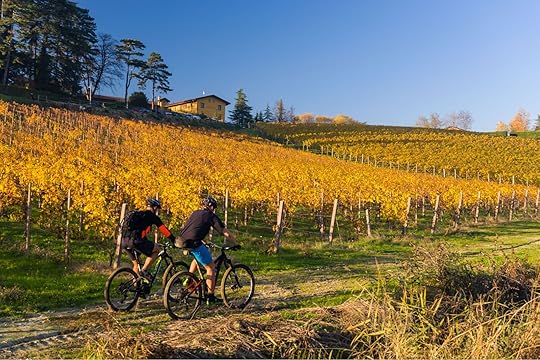
Photo: Fabio Lotti/Shutterstock
Duration: 8 daysStarting point: TorinoEnding point: La MorraKnown as the “wine capital of Italy,” the Piedmont region is famous for its old-world wines made using traditional methods found nowhere else in the world. The Piedmont Wine Country Cycling Tour takes you along some of the country’s best cycling routes, from Turin south through wine country vineyards, valleys, and meadows. You’ll also see plenty of castles and medieval villages. Expect to indulge in several wine tastings as well as local foods like cheese and specially-cured salami. The tour passes through Alba (famous for its truffles), Barolo, and other small villages, each with its own unique culinary specialties.
Best small-town tour: Montalcino Bike & Wine Tour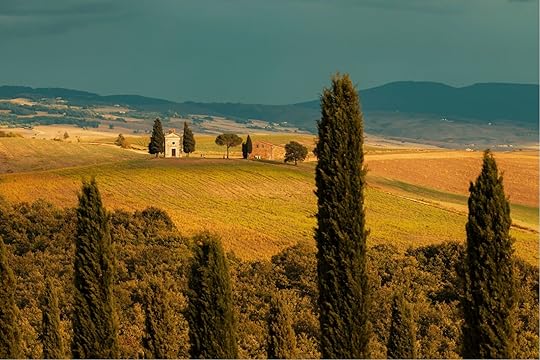
Photo: Richard Semik/Shutterstock
Duration: 1 dayStarting point: MontalcinoEnding point: MontalcinoThe one-day Montalcino Bike & Wine Tour loops around the Montalcino countryside. It starts in the old town of Montalcino and passes small villages, vineyards, and the Sant’Antimo Abbey en route to a Brunello winery. There, you’ll enjoy lunch, wine tasting of four or five wines, and a tour of the cellar and barrels, then continue by bike to the nearby village of Castelnuovo dell’Abate. On the way, cyclists can admire views of the Val d’Orcia (a stunning Tuscan valley), known for its olive groves, fields of grains, and rolling hills – before returning to Montalcino. The tour is led by an expert guide and is suitable for all skill levels. 
More like thisCycling7 of the Most Scenic Biking Routes in Europe
Skip Marfa for These True Small Town Texas Experiences
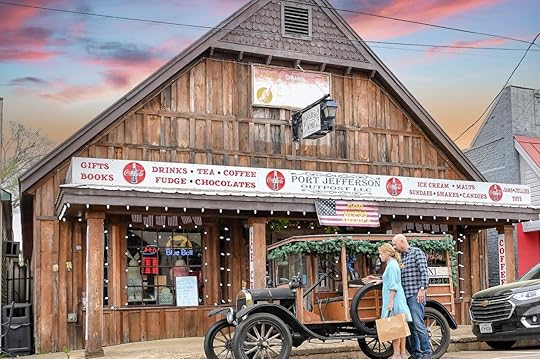
Texas is a giant state covering roughly 268,581 square miles of arid desert, perfectly textured mountains, emerald green plains, and beautiful rolling hills. Every year millions of travelers descend here, each of them trying to capture their own piece of the rustic Americana that the Lone Star State is famous for. While throngs of tourists and artists have put small towns in Texas like Marfa back on the map, the state is more than just a one-city wonder.
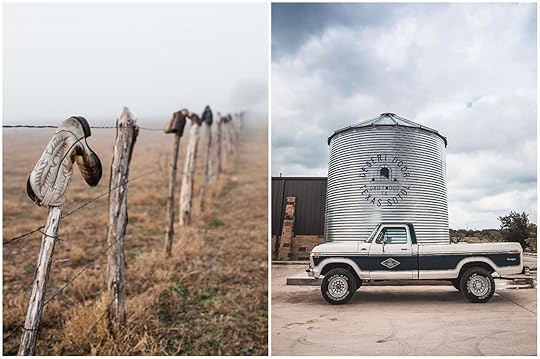
Photo: Travel Texas
Small towns in Texas are often full of character, with friendly locals and a relaxed pace of life. And, of course, the scenery is stunning. From the Hill Country to the Gulf Coast, Texas has no shortage of beautiful places to explore. So if you’re looking for a scenic drive or a place to get away from it all, be sure to check out one of Texas’s small towns. You might just find your new favorite place.
We hope you love the spaces and stays we recommend! Just so you know, Matador may collect a small commission from the links on this page if you decide to book a stay.
Bandera
Photo: Bandera Texas
Just an hour outside of San Antonio, Bandera is the destination of choice for travelers ready to trade in their sneakers for cowboy boots. The self-proclaimed “Cowboy Capital of the World” is home to a plethora of working dude ranches that invite visitors from all over the globe to breathe in the simple way of life that made the American Old West famous.
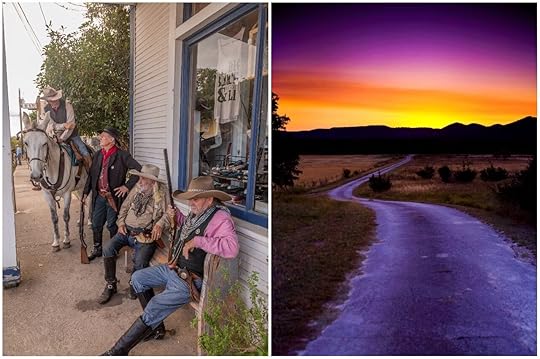
Photo: Bandera Texas/Tim Soderstrom
Bandera is in the rolling landscape of Texas Hill Country and blends a unique history of Native American, Mexican, and Polish ancestry in the area, which you can see in the well-preserved 19th-century architecture.
What to do in Bandera
Photo: Bandera Texas/

Photo: Bandera Texas/

Photo: Bandera Texas/

Photo: Bandera Texas/
Bandera is what outdoor enthusiasts daydream about while they toss back their wheatgrass shots.
Here, dude ranches are the heart and soul of the community. Options such as the Medina River Ranch and the West 1077 Ranch offer you a chance to experience sweeping scenic landscapes without sacrificing modern comforts.
The Hill Country Natural State Area grants you access to over 5,300 acres of Texas beauty for horseback riding, backpacking, hiking, fishing, mountain biking, and swimming year-round.
If you prefer to keep your tennis shoes on, head down Main Street for the beautiful small town shops and find your next set of western wear, custom hand-torched steel gate entrances, or yard signs.
Don’t think because it’s a small town that you’ll spend evenings talking to your horse. Bandera has several options for visitors looking to wet their whistles at true Texas saloons, as well as rowdy honkytonks for anyone who wants to dance the night away.
Where to eat and drink in Bandera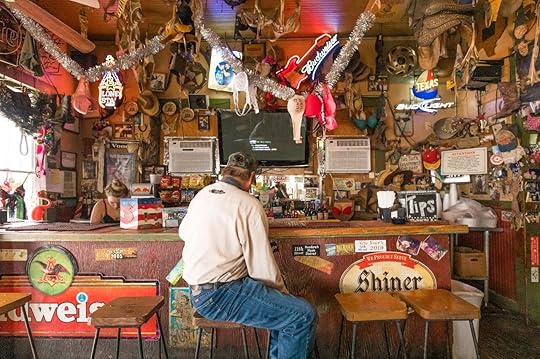
Photo: Travel Texas

Photo: Travel Texas
The number of options to eat and drink in tiny Bandera may surprise you. If you’re in a hurry, there are several fast food options, but let’s be honest, you can get that anywhere.
For true American comfort food you’ve got several options but the best two choices are TJ’s at The Old Forge where you’ll want to devour the southern style meatloaf, or the Old Spanish Trail Restaurant (or simply O.S.T.) which has been in business for over 100 years and offers lunch and dinner specials. The town has even set up a handy foodie’s Facebook page to track weekly deals.
When the sun sets in Bandera the honkytonks heat up, so you’ll want to make sure you hit the hotspots like the 11th Street Cowboy Bar and famed Arkey Blue’s Silver Dollar Saloon, the oldest continuously operated honkytonk in Texas.
Where to stay in BanderaThe Mucho Gusto Inn and Venue allows visitors a beautiful place to unwind and enjoy the fresh Hill Country evenings with pool and lounge access, plus an infrared sauna for an extra fee.
Another option is the Siesta Casita on the Medina River. This incredible cabin puts you right on the crystal clear waters of the Medina, which is perfect for a day of tubing, kayaking, or napping.
Dripping Springs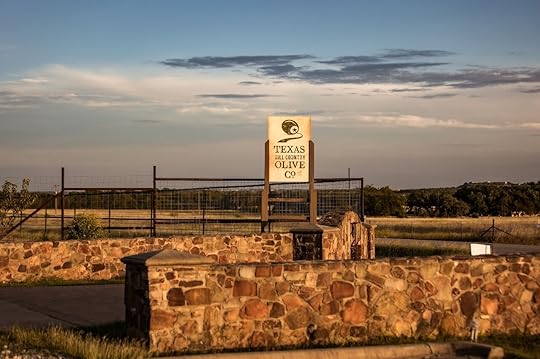
Photo: Hill Country Olive Company
Roughly half an hour outside of the Austin city limits, you’ll find one of the Lone Star State’s most popular destinations for those that believe “in vino veritas” — a Latin phrase meaning “In wine, there is truth.”
Truth seekers enjoy the plentiful selections of vineyards and distilleries that the area offers. Dripping Springs also has an amazing mix of natural wonders such as the gorgeous Hamilton Pool Preserve and Westcave Outdoor Discovery Center.
What to do in Dripping SpringsVisitors have hard choices deciding where to start their day in Dripping Springs. Your group could gather on historic Mercer Street where many of the stores were built between 1870 and 1940 and reflect the architecture of the times. On the west end of Mercer Street, you’ll also have a chance to visit the real “dripping springs” that give the town its name.
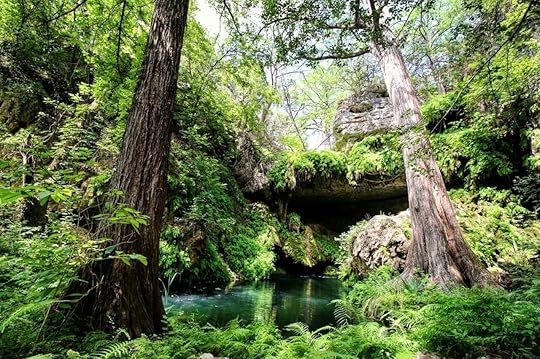
Photo: Travel Texas/@alessintime
If shopping isn’t the vibe of the day, then head to the natural wonders of Hamilton Pool Preserve (reservations required) or Reimers Ranch Park (cash only, no credit cards accepted).
Dripping Springs is in the process of being officially certified a “Music Friendly Community” which means they support and provide resources to foster and grow the arts. Stop by in October for the Dripping Springs Songwriters Festival or the always lively Mercer Dancehall, one of the last true dance halls in Texas.
Where to eat and drink in Dripping Springs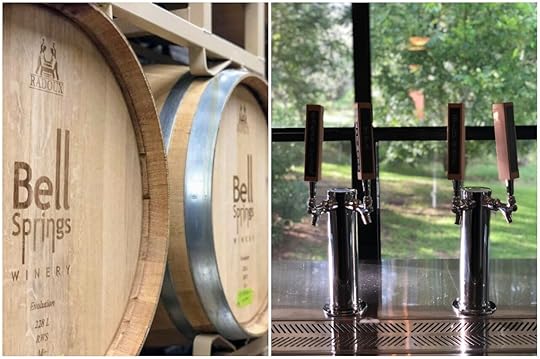
Photo: Bell Springs Winery

Photo: Bell Springs Winery
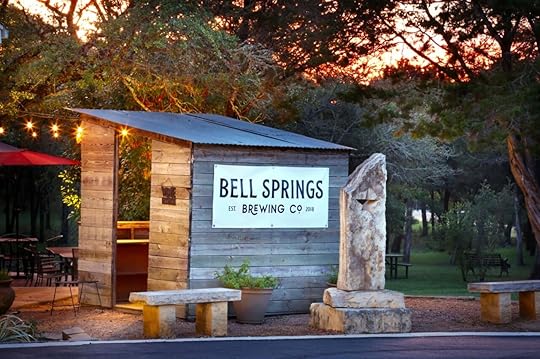
Photo: Bell Springs Winery
The popular Bell Springs Winery (and brewery) offers tastings with live entertainment, while the Twisted X Brewing Company can satisfy even the snobbiest of craft beer aficionados.
You’d be doing yourself (and all of Texas) a disservice if you didn’t stop by the legendary Texas Hill Country Olive Company for the freshest and best tasting Texas olive oil.

Photo: Hill Country Olive Company
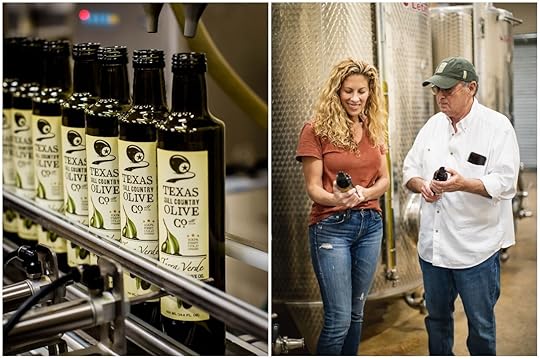
Photo: Hill Country Olive Company
While you’re there take a tour and grab a bite to eat at the bistro that celebrates their famous oils.
If you’re craving barbecue, there’s no need to look further than Pig Pen BBQ, which will leave you full, happy, and wishing you hadn’t worn those extra tight skinny jeans.
Where to stay in Dripping Springs
Photo: Booking.com

Photo: Booking.com

Photo: Booking.com

Photo: Booking.com
If you’re looking for a Texas-sized treat, try the Ranch at Wimberley which is a gated private ranch that sits on 75 acres of lush Texas Hill Country. You can reserve the entire property or one of several on-site options but it’s pet friendly and contains over 40 acres of wildlife preserve.
Maybe your travels will take you to the End of the Road, a guesthouse on a ranch with chickens, antelope, and all the nature you can handle. Plus, it’s a short distance away from both Dripping Springs and Austin, Texas.
Driftwood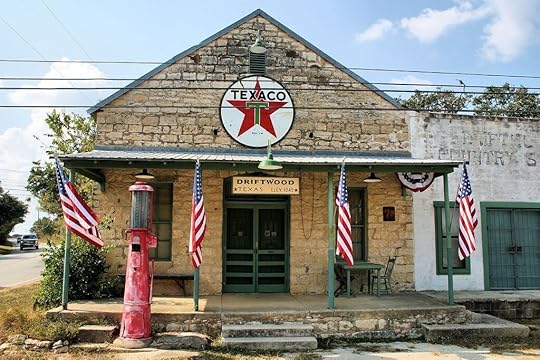
Photo: Destination Dripping Springs
Just a few minutes south of Dripping Springs, travelers will find Driftwood. Less than 200 people call Driftwood home, but folks across the Lone Star State know the tiny township for two reasons: weddings and barbecue.
What to do in DriftwoodIf you’re from Texas, you’ve probably been invited to over one wedding in or around Driftwood. If you’re passing through, you’ll probably notice that you’re hearing wedding bells.

Photo: The Wildflower Barn
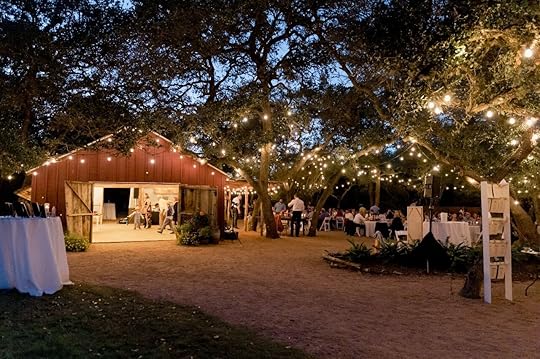
Photo: The Wildflower Barn
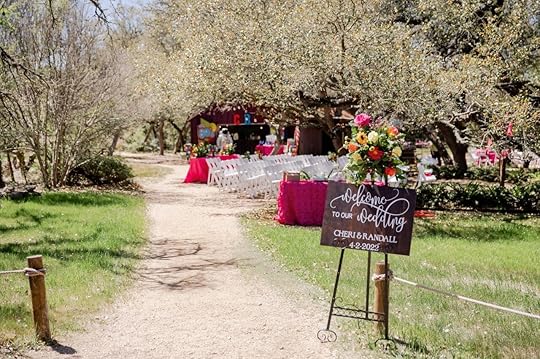
Photo: The Wildflower Barn
With fewer people roaming about, it’s spacious and quiet. Add in the rolling hills of Texas bluebonnets and Driftwood makes the perfect scene for blissful nuptials. Celebrated venues like The Wildflower Barn and Creekside Wedding and Event Venue stay booked far in advance.
After your Aunt Bertie requests the Commodores’ “Brick House” for the third time, you’ll want to sneak out the back and head to Duchman Family Winery for a tasting and a bite to eat.
Don’t overindulge though, because the next day Charro Ranch Park has 64 acres of hiking trails that help ease the pain of knowing you twerked your heart out to “Macarena” in front of your Gram Gram.
Where to eat and drink in Driftwood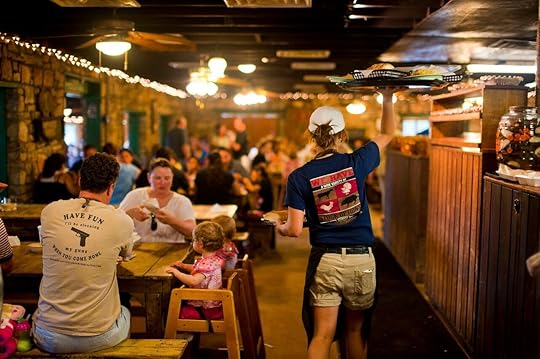
Photo: Salt Lick BBQ

Photo: Salt Lick BBQ
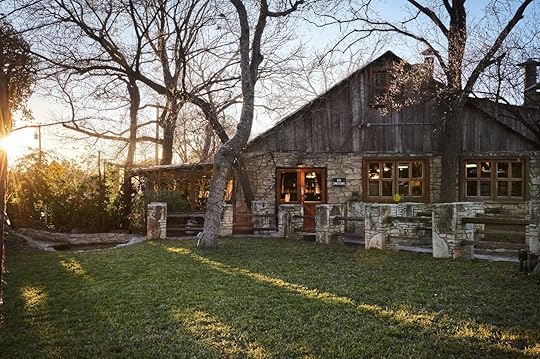
Photo: Salt Lick BBQ
Salt Lick BBQ has been serving mouthwatering barbecue since Thurman Roberts cleared a small area of dirt on his family’s land in 1967. Over that time period, it’s become a true Texas legend, being featured on countless television shows and specials and serves thousands of customers each week.
You can find wineries and breweries across Texas Hill Country, but establishments like Ghost Note Brewing Company really make visits to Driftwood complete. The selection of pilsners, porters, and IPAs are a perfect pairing for the live Texas Country music that heats up the evenings.
Where to stay in DriftwoodIf you’re staying overnight in Driftwood, try this beautiful tiny home that features a hammock, picnic table, and all the peace and quiet you can handle.
A romantic getaway needs an intimate setting and it doesn’t get much better than the Wuji House. It’s another peaceful option where you can stretch out for yoga or sleep in for rest.
Jefferson
Photo: Jefferson Texas
There are hundreds of small towns in East Texas, but none of them are quite like Jefferson. Located 20 minutes north of Marshall, Jefferson has a few nicknames: “Queen of the Bayou,” “The Bed and Breakfast Capital of Texas,” and “The Bigfoot Capital of Texas.” With that collection of nicknames, you’ll have to see it for yourself to understand why locals love it so much.
What to do in JeffersonThe Lonesome Dove Drive-Thru Safari lets your family enjoy nature without having to leave the minivan. Lonesome Dove offers a petting zoo with goats, donkeys, an alpaca, and Steve the camel, the star of Lonesome Dove.
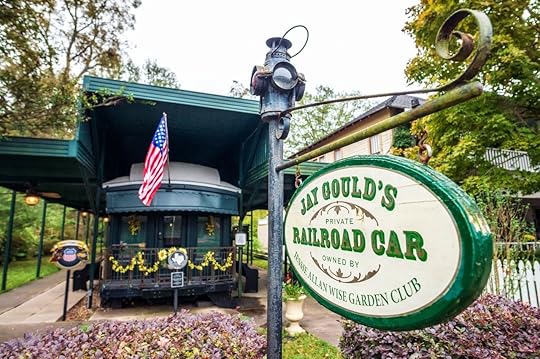
Photo: Travel Texas
Yes, there’s a Jefferson Historical Museum that holds over 200,000 square feet of town history, but there’s a different museum that seems to catch travelers’ eyes.
Rhett Butler fans will have their hearts melt with a tour of the Gone with the Wind Museum near downtown Jefferson. It’s 1,700 square feet of Clark Gable memorabilia from around the world. Vivien Leigh, of course, is also prominently featured in the rooms of collectors’ pieces, but who are we kidding? It’s all about Rhett in our hearts.
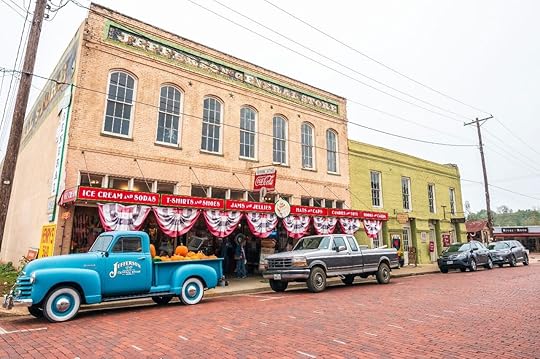
Photo: Travel Texas
The principal attraction in Jefferson, though, is its historic downtown. Horse-drawn carriage rides along brick streets guide you as you move between classic antique shops to the over 100 historical markers that dot the town. It doesn’t get any more small-town Texas than downtown Jefferson.
End the night with an LED light show of the “Howe Truss” Train Trestle. The bridge was built in 1897 and the light show was added in 2018. It’s a great place to snap some photos before heading back to your room or out for a nightcap.
Where to eat and drink in Jefferson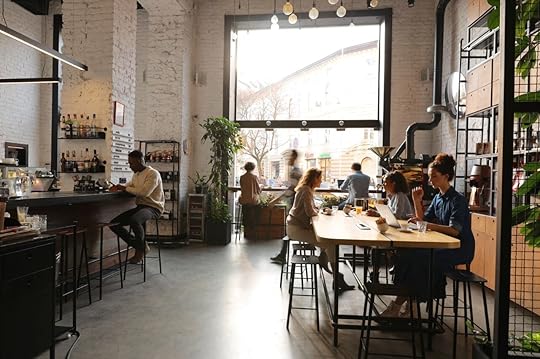
Photo: Enoch’s Wine and Coffee House

Photo: Enoch’s Wine and Coffee House

Photo: Enoch’s Wine and Coffee House
Enoch’s Wine and Coffee House combines the two best things on Earth: coffee and wine. They don’t mix them in the same cup but you can visit the tasting room for a glass of wine and a charcuterie board, or grab a gourmet cupcake and a latte in the coffeehouse.
McGarity’s Restaurant and Saloon is an extremely popular stop for those visitors looking for a great place to eat with a fun, inviting atmosphere. The kid-friendly and delightfully Irish pub has classic Irish fare like shepherd’s pie and bangers and mash but also serves vegan and vegetarian dishes as well.
Where to stay in Jefferson
Photo: Booking.com

Photo: Booking.com

Photo: Booking.com
While you’re in the “Bed and Breakfast Capital of Texas” you’ve got to try one of their many, many bed and breakfast options, such as the beautiful White Oak Manor near historic downtown. Plush bathrobes, free WiFi, and a warm breakfast each morning. What more could you want?
The oldest hotel in Texas, The Excelsior House Hotel has been in operation since 1858 and has entertained famous guests such as Ulysses S. Grant, Oscar Wilde, Rutherford B. Hayes, Lady Bird Johnson, and Steven Spielberg.
Port Aransas
Photo: Visit Port Aransas
When you visit Port Aransas, you’re officially on island time. The small town is on Mustang Island, which is a short drive from Corpus Christi, on the Texas Gulf Coast.

Photo: Visit Port Aransas
Altogether it’s 18 miles of sandy beaches, fish-filled waterways, surfing, sunshine, and margaritas. In short, it’s the premier Texas beach destination.
What to do in Port Aransas
Photo: Visit Port Aransas
On top of the world-class deep-sea fishing and golfing, Port Aransas offers family fun like jet skiing, parasailing, and other water activities. Even though Port Aransas is the only small town on Mustang Island, it’s a place that’s always got events popping off.

Photo: Visit Port Aransas
The Texas SandFest pits master sand sculptors against one another as they create masterpieces in the Texas sand.

Photo: Visit Port Aransas
Each February, the Whooping Crane Festival invites birdwatchers to Port Aransas to celebrate the return of the cranes to their wintering habitat on the island. It’s a four-day event with birding trips, boating trips, and nature tours.
PalmFest and BBQ Masters Throwdown is a particularly enticing event each May. It’s the Southern Coast Open’s cover band extravaganza and features two days of live music by the very best cover bands in the state. Add in the BBQ Masters Throwdown and you’ve got a weekend of great music and delicious food.
Where to eat and drink in Port AransasSeafood reigns supreme in Port Aransas, where fresh daily catches are served up to travelers in flip-flops and tropical shirts. It’s island life, so no one is going to judge you.
Start with some chile con queso and chips before grabbing a flounder basket with hush puppies or an order of curried coconut shrimp tacos at Iries Island Food.

Shorty’s Place. Photo: Visit Port Aransas
Chill out listening to great live music at the Port Aransas tradition called Shorty’s Place, which has been open since 1946. The ceiling is lined with baseball caps from visitors over the years. It’s extremely popular and fills up fast, so get there early.
Where to stay in Port AransasThe Aloha Beach tiny home gives visitors private patio areas and a pool to cool down in on those warm summer nights.
Just outside of Port Aransas, you’ll find this beautiful home with guest rooms upstairs and downstairs, a backyard for the kids to burn off some energy, and it’s only a short walk to the beach!
Smithville
Photo: BoldAngles.com/Shutterstock
Roughly 45 minutes east of Austin is the small town of Smithville. Travelers from Houston to the capital of Texas are more familiar with it as one of several small-town stops along Highway 71, but everyone can agree that Smithville personifies small-town Texas.
What to do in Smithville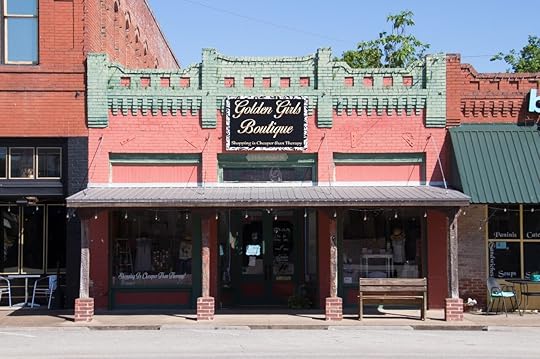
Photo: Philip Arno Photography/Shutterstock
Downtown Smithville on and near Main Street features mid-century architecture, faded murals, and quaint mom and pop shops that are a staple of small-town living. There are a handful of antique stores, coffee shops, and restaurants for patronizing and several historic buildings for those history buffs in your life.
The James H. Long Railroad Park and Museum have artifacts dating back to the late 19th century and is a charming small town addition to the city that kids will enjoy.
While you’re there, you’ll notice you’re being watched by a 20-foot-high Gingerbread Man named Smitty. Smitty is the result of a Guinness World Record owned by the town for the world’s largest gingerbread cookie.
Smithville has been the filming location for several movies, including Hope Floats (starring Sandra Bullock and Harry Connick Jr) and Tree of Life (starring Brad Pitt and Jessica Chastain). As you wander around the town, you can be on the lookout for scenes from these and other films.
Where to eat and drink in Smithville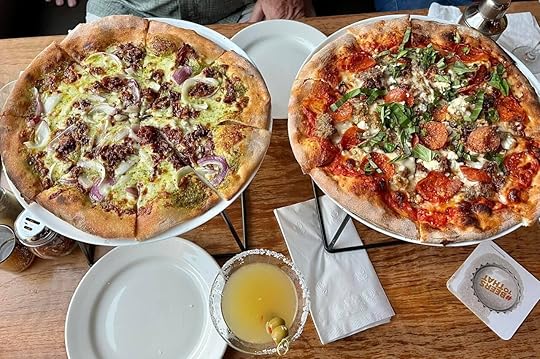
Photo: Honey’s Pizza
Speaking of filming locations, Honey’s Pizza (called Honey’s Cafe in Hope Floats) is the best place to pick up a wood-fired slice and have a soda or local craft beer.
The Back Door Cafe serves southern comfort staples such as chicken fried steak and baked cornbread catfish, with a mix of gluten-free and healthier options. This small town casual cafe is perfect for families.
Where to stay in Smithville
Photo: Airbnb

Photo: Airbnb

Photo: Airbnb

Photo: Airbnb
If you’re traveling with a group consider the spacious Whispering Winds on the Colorado River. It sits on over three acres of land, giving your group plenty of room to spread out, grab the fishing poles, and have a great time on the river.
The Katy House Bed and Breakfast is the perfect spot for a weekend getaway that’s in the heart of Smithville. It’s a fully restored turn-of-the-century home with all the modern comforts including a complimentary breakfast.
Terlingua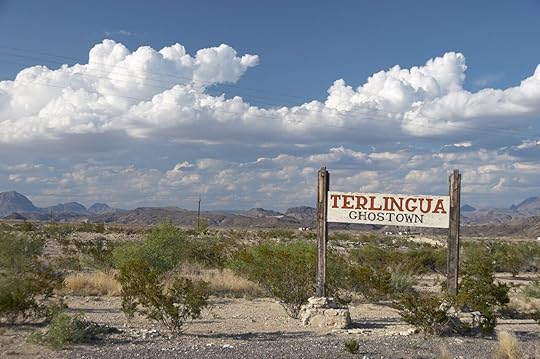
Photo: Moses Rode/Shutterstock
Terlingua is best known as a former mining town turned ghost town turned Texas chili haven. It’s as unique a story as a town can have without stretching the truth. The closest major cities are El Paso, which is four hours to the west, and San Antonio, which is nearly seven hours to the East. If you want uninterrupted, yet splendid isolation, Terlingua needs to be on your travel list.
What to do in TerlinguaTerlingua sits in the shadow of Big Bend National Park, an ultra-popular destination for outdoor lovers. The small Texas town is usually a stop for a quick bite to eat for visitors either heading to or coming from the park.
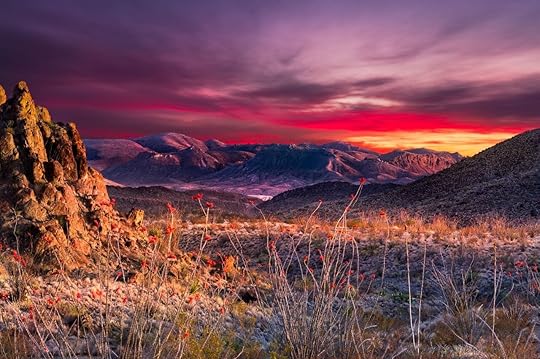
Photo: Dean Fikar/Shutterstock
The unique thing about Terlingua, though, may be its title as “Chili Cookoff Capital of the World.” Thousands of “chili heads” descend on the small town each November for the Terlingua International Chili Cookoff which swells the town with people and kicks off a four-day party in the desert. The cook-off in the desert is an experience everyone should see with their own eyes at least once.
Where to eat and drink in TerlinguaMornings are dreadful without coffee, and you’ll want to get your fix here at Espresso Y Poco Mas (translation: Espresso and a bit more). They also have fresh juices, classic breakfast options and lunch offerings, such as homemade meatloaf sandwiches and reubens.
The Starlight Theatre Restaurant and Saloon is a converted old movie palace that now serves classic Texas eats and gourmet meals to hungry patrons. It’s probably the most popular stop in Terlingua, but that doesn’t mean it’s snobby. Ties are strictly prohibited here.
Where to stay in TerlinguaWillow House is a desert retreat where you’ll have your pick from twelve casitas on the 250-acre property. It’s a short distance from Big Bend, the Rio Grande River, and Chisos Basin while giving visitors unobstructed views of the gorgeous Chisos Mountain Range.
Want a truly unique experience when visiting Terlingua? Book this Corazon Sanctuary Peyote Tipi. It’s upscale primitive camping at its finest with a futon, fire pit, a table, and chairs, plus your very own composting toilet!
Shiner
Photo: Spoetzl Brewery
In an area that local Native Americans once called “Half Moon,” Shiner sits between Houston and San Antonio and has deep Czech and German immigrant roots. Although the small town (which was incorporated in 1890) has grown with the times to include modern businesses such as a world-famous brewery, it has stayed a small town at heart.
The birthplace of Major League Baseball Hall of Famer Ross “Pep” Youngs, Shiner is meant for visitors who like to exit the busy highways and take the more scenic drives of Texas.
What to do in Shiner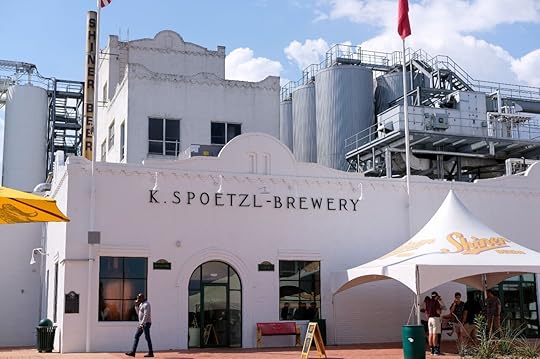
Photo: Juio DB/Shutterstock
The Spoetzl Brewery is the home of the insanely popular Shiner Beer line of brews. You owe it to yourself to take a tour of the facilities and get in on a tasting at the end. It’ll cost you $20, and you have to be at least 21, but it comes complete with new interactive experiences, multimedia exhibits, and a brand new honky-tonk bar.
After you sleep off the fun you had at Spoetzl, stop by the national historically recognized Saint Cyril and Methodius German Church to view its amazing Romanesque revival style architecture, stained glass windows imported from Munich, and gorgeous painted interior.
If you have time, visit the Edwin Wolters Memorial Museum and get a history lesson on Shiner and the people that have helped it thrive over the years.
Where to eat and drink in ShinerHungry travelers will want to make their way to Mary’s Tacos to enjoy classic Tex-Mex lunch options like quesadillas, tacos, and enchiladas.
Howard’s is a one-stop-shop convenience store with a hidden Biergarten in the back. There’s live music in the evenings and cold drinks are available all day. You can also pick up bait and tackle or ammo if you’re heading out to hunt varmints.
Where to stay in Shiner
Photo: Airbnb

Photo: Airbnb

Photo: Airbnb

Photo: Airbnb
The Cozy Pea is a great option for families looking for a little space for some peace and quiet during their visit. Plus, it’s decorated with peacocks, so what’s not to love?
Keeping with a bird theme, the Chick-Inn Coop is a renovated barn stuffed to the brim with chicken decor and southern charm.
PoteetPoteet, Texas, is a small flat parcel of farmland 30 miles south of San Antonio. It may not seem like much to outside eyes, but Poteet is Texas royalty. Not only is Poteet the “Strawberry Capital of Texas” but it’s also the birthplace of the “King of Country” George Strait.
Most everything revolves around the heralded Poteet strawberry, as you’ll find hand-painted signs, murals, and even the World’s Largest Strawberry, which is a 130-foot tall water tower painted like the fruit.
It’s a folksy and classically small town, but for one weekend a year, it becomes the focal point of South Texas.
What to do in Poteet
Photo: Poteet Strawberry Festival

Photo: Poteet Strawberry Festival
Every April since 1948, thousands of smiling faces descend on Poteet for the famous Poteet Strawberry Festival, where delighted visitors partake in a celebration of the local fruit and vegetable growers.
There’s a parade, a “Taste of Texas” Food Show contest, a strawberry auction, and a strawberry festival court where two local high schoolers are crowned king and queen of the festival. It’s a berry big deal.
The weekend also features plenty of live music with past headliners such as country stars Sara Evans, Kevin Fowler, Tanya Tucker, and conjunto star Ramón Ayala.
Although it had humble beginnings back in 1948, the festival now attracts over 100,000 visitors and commands an army of nearly 8,000 volunteers. Like New Orlean’s Mardi Gras celebration, the Poteet Strawberry Festival is an event everyone needs to experience at least once in their life.
Where to eat and drink in PoteetWhen it’s not festival season, Poteet still has plenty to offer in terms of great places to fill your belly.
Backyard Kitchen is a burger restaurant serving Texas-sized fares such as the Good Morning Burger, Backyard Nachos, and the class Backyard Burger.
If you’re in a hurry, you can always slide your entire car through the Heads and Heels Beverage Barn where you can order some hot food and cold drinks that they’ll load right into your vehicle. Just be sure not to pop any tops until you’re back to your lodge for the night.
Where to stay in PoteetThe Little Cabin on Rose Hill is popular with weary travelers and for good reason. It’s a 500-square-foot log-sided cabin on a small patch of heaven outside of Poteet and only 30 minutes from San Antonio as well.
This tiny cottage is on a 33-acre ranch and offers a giant porch for enjoying colorful Texas sunrises and splendid sunsets. You’ll have a pool for cooling off in the summer and a firepit ready to keep you warm in winter. 
New Study Found the 10 Most LGBTQ+ Friendly European Countries in 2022

Whether it’s looking for a place to visit or a place to settle down for a while, everyone wants to feel safe while traveling. Unfortunately, LGBTQ+ travelers might still find themselves nervous traveling to a country without knowing the full picture. The International Lesbian, Gay, Bisexual, Trans and Intersex Association (ILGA) in Europe recently released the results of its 2022 Rainbow Europe Map. The map serves as an index over the last year that ranks how European countries have stacked up to stand up for LGBTQ+ rights and create policy that serves this community.
For the seventh year in a row, Malta received the number one spot on the index, scoring 92 percent based on the study’s standards. But more interesting is Denmark’s spot in second place. Last year, Denmark occupied the seventh-place spot. However, this past year Denmark has made strides by filling in anti-discrimination gaps in current legislation. It amended laws to support health, education, employment, and goods and services, and clarified that sexual orientation, gender identity, gender expression, and sex characteristics can be aggravating factors in a hate crime. Belgium rounds out the top three with a score of 72 percent.
The top 10 most LGBTQ+ friendly European countriesMaltaDenmarkBelgiumNorwayLuxembourgSwedenFranceMontenegroIcelandPortugalThe United Kingdom had the most significant fall, going from 10th place to 14th place after dropping 11 percent. The UK earned a score of 53.4 percent due to its equality body mandate’s lack of work on sexual orientation and gender identity and its equality action plan was not renewed or implemented.
To find the most LGBTQ+ friendly countries for the 2022 Rainbow Europe Index, ILGA-Europe studies the laws and policies in 49 countries under 74 different criteria, which are then divided into seven major categories: equality and non-discrimination, family, hate crime and hate speech, legal gender recognition, intersex bodily integrity, civil society space, and asylum.
If you’re looking for a queer-friendly getaway, there are plenty of great cities all across Europe that have cool culture and amazing places to stay. And if Europe isn’t your thing, you might be surprised to find LGBTQ hotspots in Mexico, Serbia, and Utah. Although the study showed concern for some Eastern European countries, there are great options to visit there, too. Just know that there’s always room for improvement. 
May 16, 2022
Margaritaville Vacation Club’s Two Caribbean Resorts Offer Distinctly Different Views of the Region
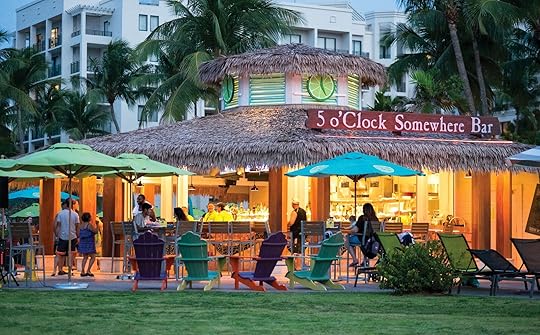
Heading to the Margaritaville Vacation Club’s by Wyndham in the Caribbean, I found some unknowns actually made the trip much more exciting. For one, I had never been to the Caribbean before, and I had dreams of clear water and sandy beaches. The other was I knew pretty much nothing about the Margaritaville brand. Maybe it’s because I’m not very fond of country music, but I also had no idea who Jimmy Buffett was–sorry Mr. Buffett!
Buffett is the founder of Margaritaville, who turned his song about melting your troubles away by “nibblin’ on sponge cake” and “wastin’ away in Margaritaville” into an empire. Yet, the two Margaritaville Vacation Clubs I visited, one in Puerto Rico and the other in St. Thomas, had very distinct differences. And depending on how you like to vacation, you may be tempted to choose one over another.
The property
Photo: Margaritaville Vacation Club by Wyndham
Puerto Rico: The Margaritaville Vacation Club Rio Mar has a different layout than most other Margaritaville Vacation Clubs. The Margaritaville Vacation Club Rio Mar has a different layout than most other Margaritaville Vacation Clubs. Because the Margaritaville shares the property with the with a neighboring hotel, vacation-goers get the best of amenities from both a vacation club and a hotel stay. The hotel is about 45 minutes away from San Juan’s major airport and its location allows guests to enjoy all of the luxuries of being on a beach while also being surrounded by mountainous views of the rainforest.

Photo: Margaritaville Vacation Club by Wyndham
Upon arrival, I checked in and asked what side of the resort I was staying on. At this location, the Margaritaville Vacation Club shares the resort with the Wyndham Grand Rio Mar, a traditional hotel. She then gave me a wristband that was my room key and a map of the resort because it was massive. Once I headed to my room, I immediately felt like I was on island time. I stayed in an ocean-front studio with a king-size bed, but the property also had deluxe studio rooms and one-bedroom suites. While the room wasn’t quite as modern, I loved the fact that it had all the luxuries of a living room area kitchenette with the iconic Frozen Concoction Maker, in addition to all of the island decor throughout the room that gave it a very chic look. But the best part was the view — absolutely stunning.
Guests can also enjoy the on-site amenities, including golf courses, the casino, a fitness center, fire pits, hammocks, cabanas and tennis courts. I, of course, had to check out the pool and swim-up bar, which served great drinks. I also made my way to the beach to put my feet on the golden sand and listen to the crash of the blue waves which is so relaxing. I could have definitely moved in, long-term.

Photo: Margaritaville Vacation Club by Wyndham
St. Thomas: The Margaritaville Vacation Club in St. Thomas had a distinctly different vibe. The resort is about a half-hour from the airport and tucked on the island’s eastern shore along Water Bay. After checking in, I got a tour of the property. All of the rooms are inside little cottages across the property. It can be difficult to get around the hilly property, so golf carts are available, and hotel employees will pick you up and drop you off as needed. My favorite part of the property is the cute, little town square in its center.
Guests can go to “city hall” to learn more about vacation ownership, while also checking out the shops, a cafe, a store for essentials, and more. I stayed in another studio with similar amenities as the Puerto Rico property, but this room felt much larger. The St. Thomas property has similar amenities: cabanas, hammocks, hot tubs, and a fitness center plus beach access. Even though this beach is much smaller, there is Coki beach just across the way with crystal clear water, which is a ten-minute walk from the hotel.
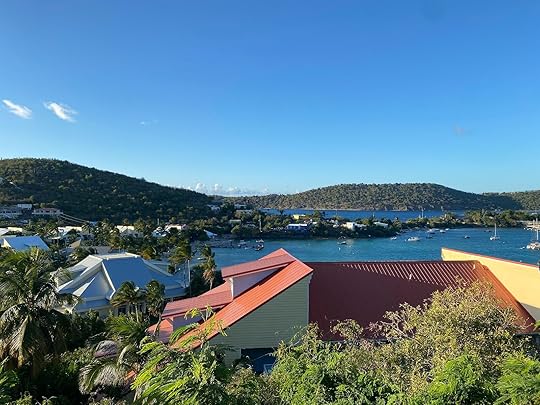
Photo: Olivia Harden
Both of these Margaritaville Vacation Clubs are vacation ownership properties. You can book a stay in them like any other hotel, but you can also become a vacation owner. Vacation owners have a homeport on the property of their choosing, but they also have access to nearly 200 resorts worldwide through Club Wyndham and Wyndham Club Pass. These perks run on a flexible point system that grants you access to 240+ apartment-style resort accommodations through the club, or you can exchange points for stays at around 4,200 affiliated resorts worldwide.
Food and drinks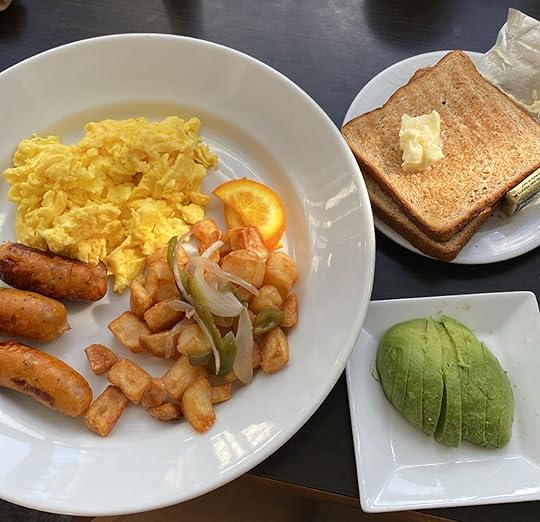
Photo: Olivia Harden
Puerto Rico
The Puerto Rico property has 10 different restaurants. Of course, if you’re trying to save money or planning on an extended stay, you can definitely buy groceries and make full use of the kitchenette in your room. However, the food I ate was pretty tasty. On my first morning there, I had breakfast at Marbella, which has a buffet option, but I decided to order fresh off the menu.
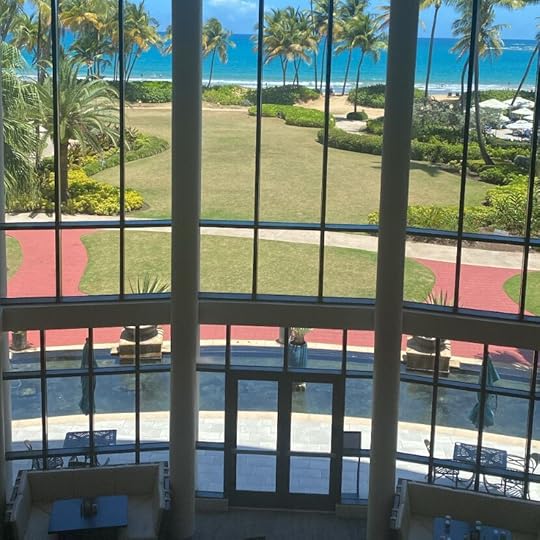
Photo: Olivia Harden
I ordered a typical American breakfast — scrambled eggs with chicken sausage and breakfast potatoes plus a side of avocado to smear on my toast. The restaurant has a gorgeous view of the ocean, but the must-visit spots are poolside. I had lunch at the 5 O’Clock Somewhere Bar, where of course, the star of the show was the margaritas. I had the “Fins to the Left”. It’s a twist on their classic house margarita with blue curacao. So, if you liked blue raspberry slushies as a kid, ask them to make it frozen. You won’t regret it! And definitely take advantage of the swim-up bar.
St. Thomas
By comparison, you can tell the St. Thomas property was designed with long-term stays in mind. There are only a few places you can get food while on the resort, and all of them are independently operated — meaning you don’t get the convenience of charging it to the room. The 5 o’Clock Somewhere patio and bar are also poolside. But there’s a little gem tucked away into the town square where a shop makes breakfast-to-go, including coffee and breakfast sandwiches. It’s the perfect choice if you’re planning on getting out to do excursions early in the morning.
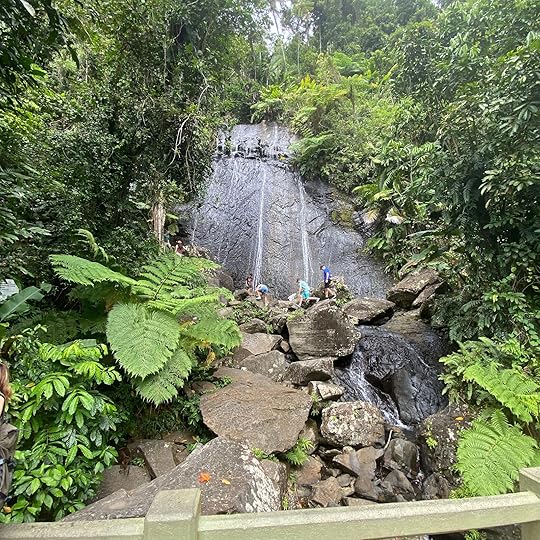
Photo: Olivia Harden
Puerto Rico
In Puerto Rico, the unique landscape close by the hotel is worth exploring. Just 20 minutes away, you’ll be in El Yunque National Forest. Many of the trails are still shut down due to hurricanes, but there are still natural waterfalls and lots of viewpoints available to explore if hiking is not your thing. I highly recommend taking a tour with a park ranger at the visitor center, redesigned after the hurricane. The ranger takes you on a 15-minute guided walking tour, explaining the biodiversity and significance of the rainforest.
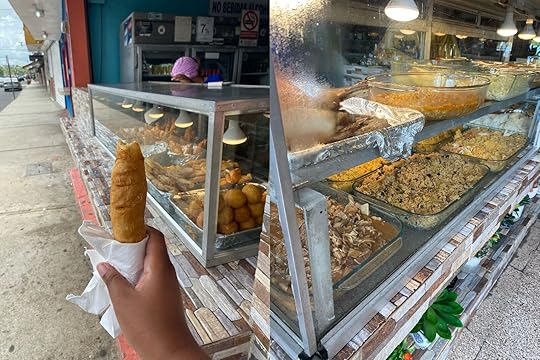
Photo: Olivia Harden
I’d also recommend getting off the property to go to the kiosks. Kiosks on Sundays are treated like the mainland tradition of barhopping. Kiosks are little shops that sell street food, souvenirs, and other little knickknacks. On Sundays, the locals will hop around to each booth to try different food and congregate with friends. My favorite thing I tried was surullitos, a traditional Puerto Rican corn stick with cheese inside. And, of course, you should definitely check out Old San Juan for a classic bar-hopping scene.
St. Thomas<
While you stay at the Margaritaville Vacation Club, I would recommend the walk to Coki Beach. The beach was terrific, but the best part was the traditional island food. I stopped by one of the little booths to order a plate of traditional island food. I ordered a surf and turf plate with chicken and fried shrimp and by far, it was one of my favorite dishes of the trip. It came with beans and rice, macaroni salad, plantains, and corn. The portion was so huge that there was no way I would have finished it all!

Photo: Olivia Harden
If you’re into watersports, then take some time to go snorkeling. A short drive took us to Cas Cay Kayak, Hike & Snorkel Adventure Tour. The three-hour ecotour was outstanding. First, we kayaked through a protected Mangrove to get to a flatland hike. Then finally, we had a chance to get our toes wet and dive into the water to see lots of fish and other wildlife. Our guide was very knowledgeable about the island’s history and nature.

Photo: Olivia Harden
Whatever you do, do not leave St. Thomas without trying BLUE 11. David Benjamin, also known as Chef Benji, is long due to receive a Michelin star. The restaurant offers a tasting menu where you can opt for seven, nine, or 11 courses. I chose the 11-course meal, and it was one of the best meals I’ve ever had, with items like lobster in a decadent cheese sauce and a homemade donut served with banana ice cream– 10 out of 10!
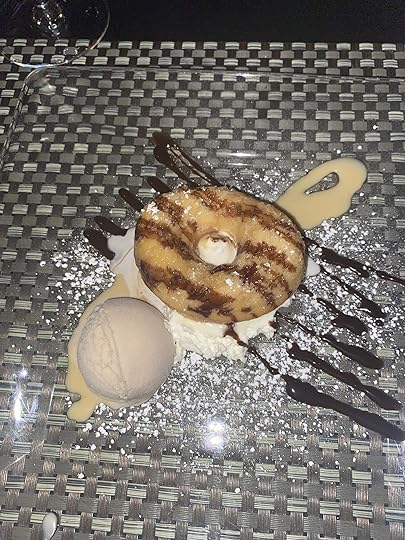
Photo: Olivia Harden
When deciding which Margaritaville to stay at, you can’t really go wrong when choosing your slice of paradise. The Margaritaville Vacation Club properties are the perfect landing place for your island getaway. When it’s time to come home, you’ll be so relaxed you’ll end up like me — never wanting to leave. 
Matador Network's Blog
- Matador Network's profile
- 6 followers



